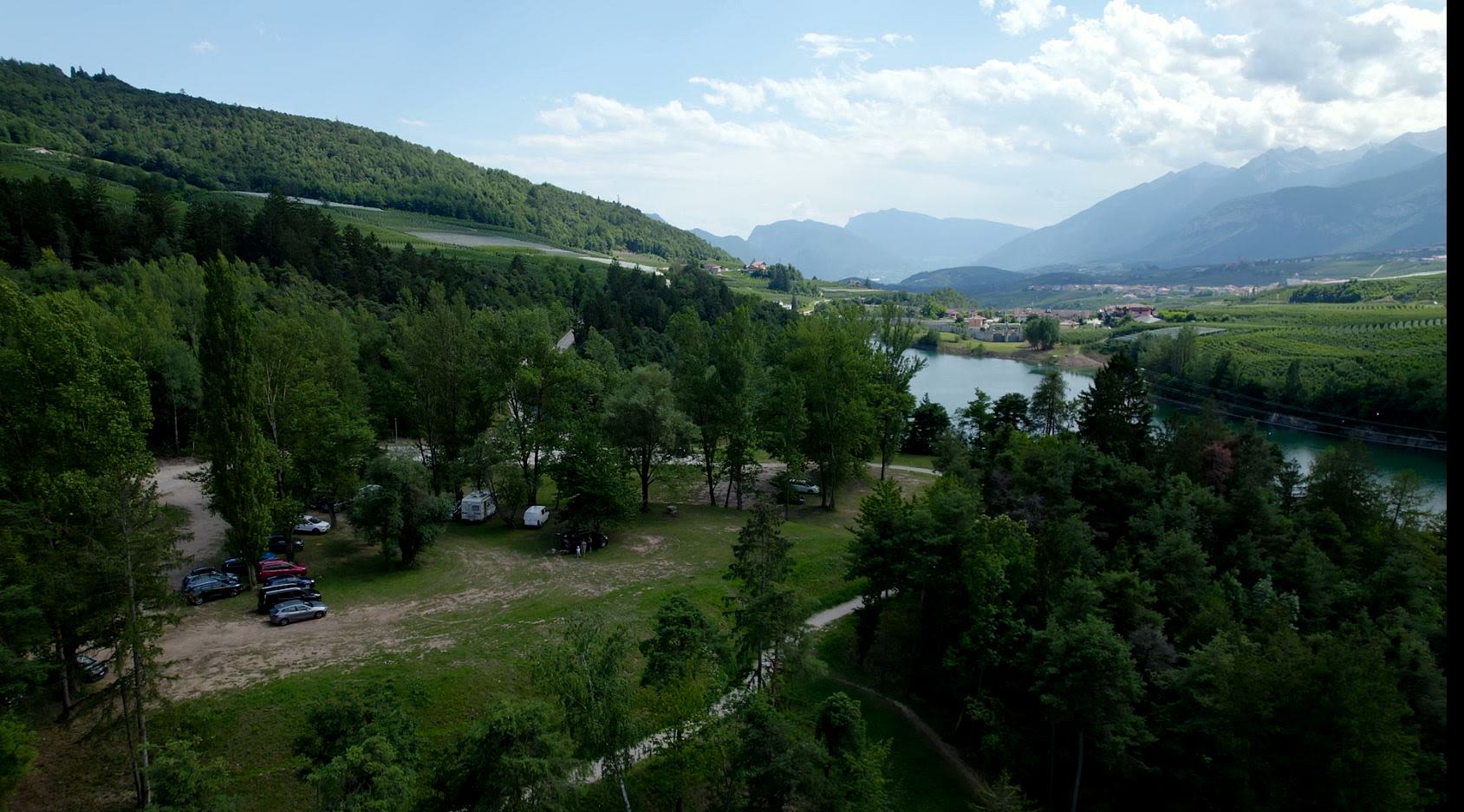BATTLE FOR THE BEARS
A gruesome fatal attack by a rewilded bear has ignited a ferocious row in Italy.
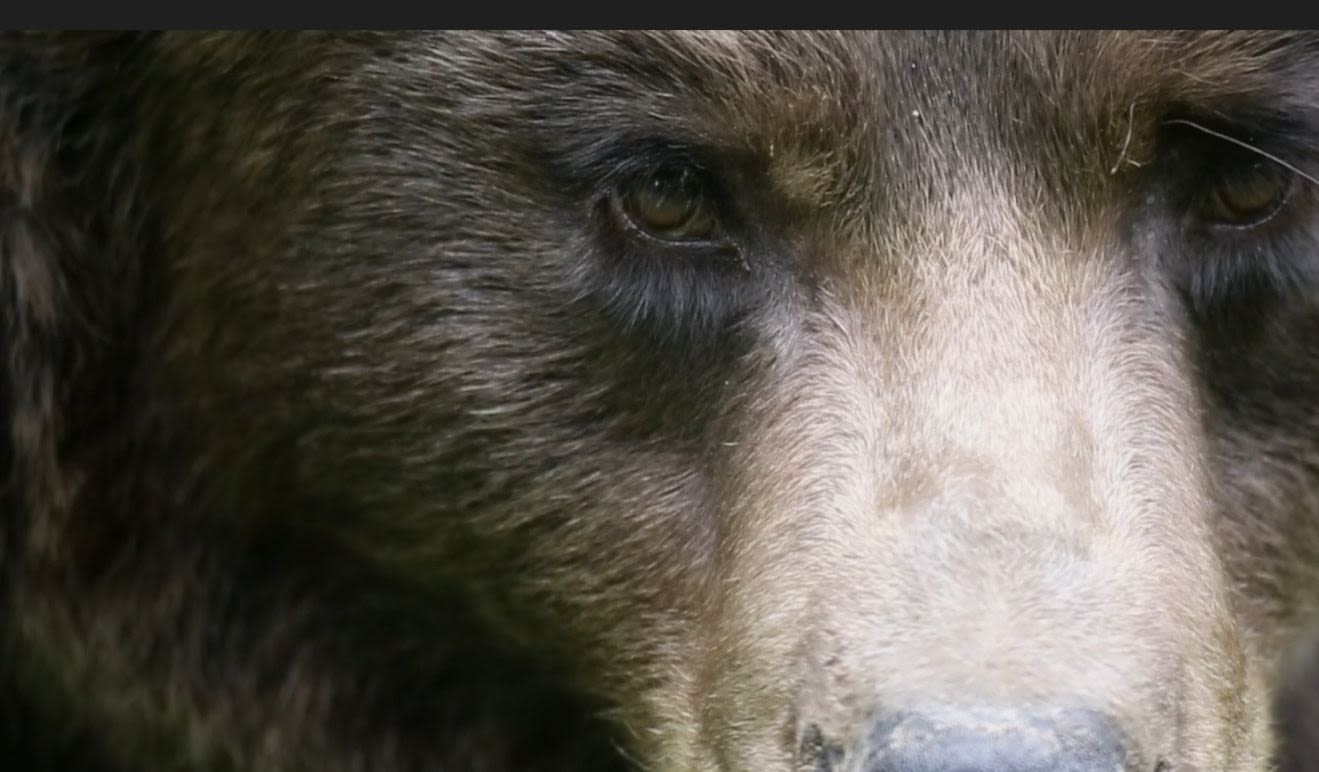
April 5, 2023 seemed like an ordinary, if delightful, day for Andrea Papi. A fan of the outdoors, the 26-year-old laced up his trainers and set out for a jog. His route was through the beautiful Brenta Dolomites nature reserve in the province of Trentino, where Italy's Lombardy Plain gives way to the majesty of the Alps.
But Papi would never complete his outing. As night fell, his concerned family reported him missing, and the following day his body was discovered – mauled to death, with DNA testing confirming the culprit was a bear.
Shockingly, it may not have come as a huge surprise to the victim. In 2020, a father and son had been attacked by a bear, but the risk didn't dampen Papi's enthusiasm.
"He always loved nature and running," Papi's friend Ilenia tells CGTN. "He always said 'OK, I know there is a bear, but I don't think that he will kill me because many people go up there and I cannot be the unfortunate case."
The tragedy of Papi's death also sharpened a growing divide in Italy and beyond. The luckless jogger was the first Italian to be killed by a bear in modern times – times which include the purposeful rewilding of large carnivores.
How safe are such rewilding programs? What should happen to problem bears? And how much should humans alter their behavior to reflect the ecology they have chosen to change?
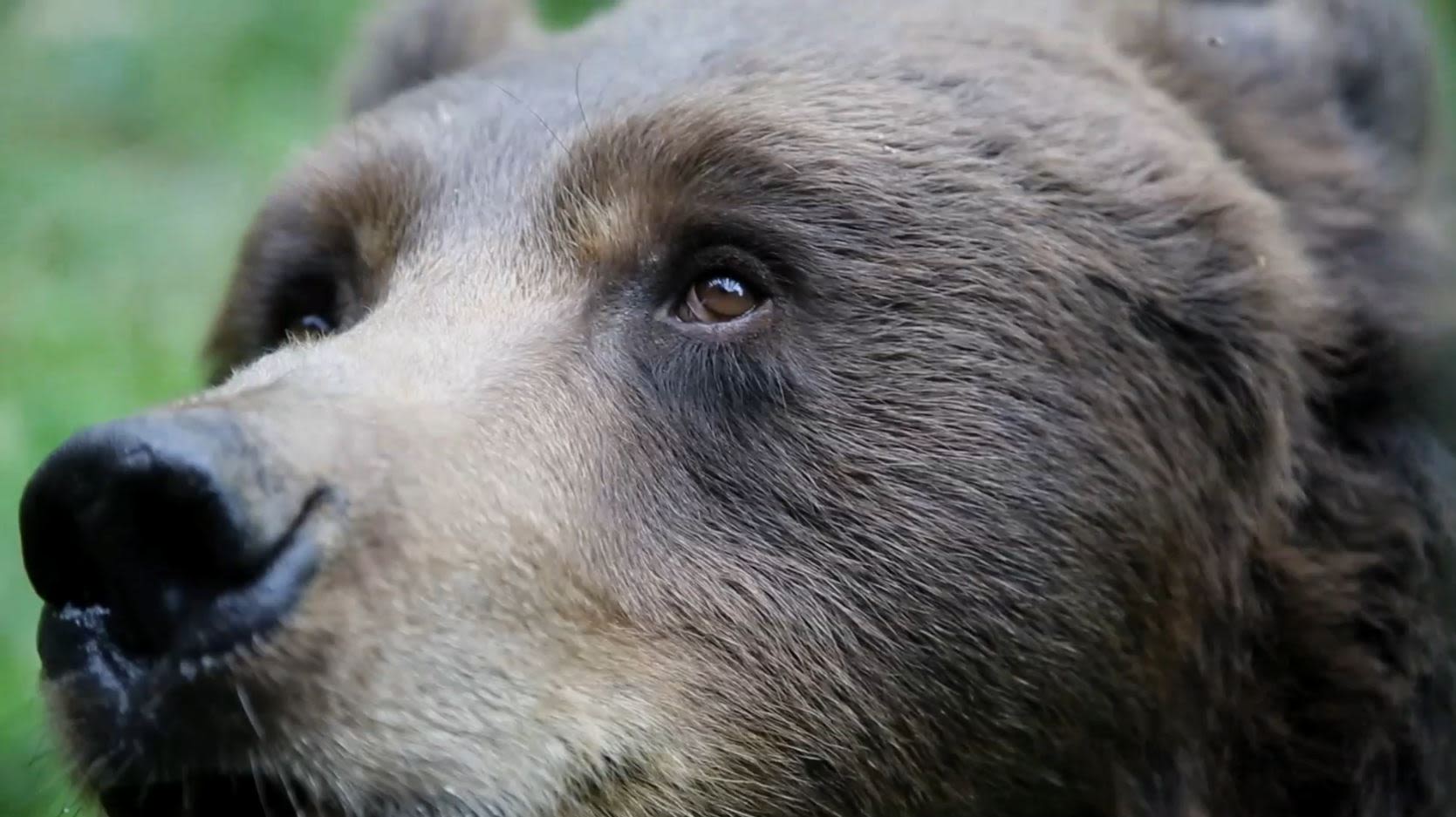
Bears: Beautiful but deadly. /Life Ursus Project
Bears: Beautiful but deadly. /Life Ursus Project
The first modern bears evolved around five million years ago and happily ranged across much of the planet until a certain bipedal mammal came along.
Humans have long been understandably wary of bears – especially since we started to switch from hunter-gathering to agriculture, around 10,000 years ago; the development of firearms tilted the balance of power between the two species. But bears have also played surprisingly significant roles in human culture – or rather, humankind's various different cultures, many of which have only relatively recently become aware of each other.
Although experts bicker over details, there is evidence of prehistoric bear worship in a vast number of cultures, from the Celts on Europe's western fringe to the Ainu in the far east of Asia. For some native Americans the hibernating bear symbolizes rebirth; for many cultures the animal's size and strength implies masculine virility (think of Russia), but the mother bear's ferocious familial protectiveness has also been noted across continents as totemic of maternal love.
As humans coalesced into villages, towns and cities, many of these settlements took the bear as a symbol. One such example is Sardagna, in Trentino, and it's where Andrea Pugliese comes to meet CGTN.
Pugliese is a professor at the University of Trento in the province's capital, from where he arrives by cable car. He's also the president of the Trento branch of Legambiente, Italy's largest environmental NGO – and he's here to show a bear cage.
"In the middle of the 20th century, there were bears that were kept here," he explains. "There was, I think, an ambivalent relationship with the bears – they were both something that was feared, but something also that was admired – so keeping bears here was something that used to be relevant for the population, and actually was the symbol of this little village here, the bear."
The Trentino region has a long history with bears – one which has seeped into its spirituality. For a millennium or more, locals have told the story of San Romedio, or Saint Romedius.
The son of a nobleman, Romedius gave his possessions to the church after a pilgrimage to Rome and retreated to Trento's Non valley to meditate. Setting out to visit his old friend who was now the Bishop of Trento, he saw his horse torn to pieces by a wild bear – but he bridled the bear, rendered it docile and rode it to the city.
His grave became a site of pilgrimage, with a church growing up around it. And in 1958, the sanctuary of San Romedio received an unusual but fitting gift – a bear called Charlie, purchased by a World Wildlife Fund committee member to save it from death.
Nowadays, under images of the saint and his dewilded companion, San Romedio is a tourist attraction complete with a bear pit featuring Bruno, rescued from captivity and brought to the sanctuary.
Andrea Mustoni headed the Life Ursus bear rewilding project, but he explains that they were far from the first locals to consider ursine conservationism.
"The idea of reintroducing bears and protecting them in western Trentino is a very old idea," he says. "Even at the beginning of the 20th century, in 1919, some Trentino intellectuals had already written about the need to protect the bear in western Trentino."
It turns out that Trentino, where bears are literally the stuff of legends, also has a long history of ursine conservatism.
"Then, more than a century later, in 1988, the Autonomous Province of Trento established the Adamello Brenta Nature Park with the idea of protecting the species – and then of proceeding with a reintroduction, in the event that the bear faced extinction."
There's an old saying about the road to hell being paved with good intentions, but while Mustoni, Pugliese and other ecologically-minded types didn't mean for a jogger to die, there's clearly an inherent risk in the introduction of a predatory species which can reach 350 kilograms in weight and 2.2 meters in height.
Bringing the bears back
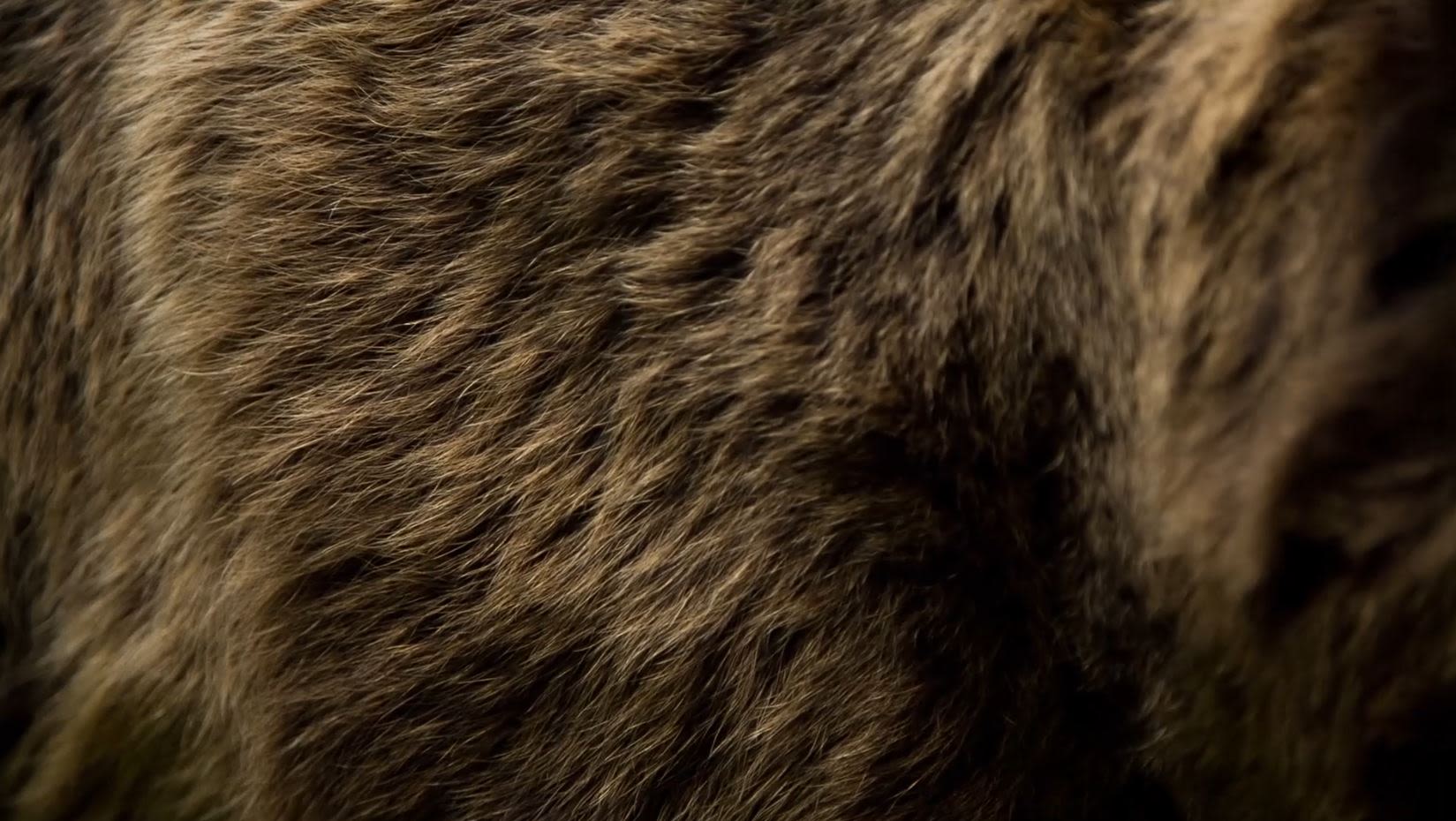
"The bear has been one of man's companions for thousands of years."
Andrea Mustoni was the man chosen to coordinate the EU-funded Life Ursus project and prevent extinction of the Italian bear population by reintroducing the animals to the central Alps. But rewilding isn't as simple as persuading other countries to hand over bears and then setting them free on a hillside.
On the contrary, the more used to humans a bear is, the less likely it is to thrive in the wild – and the more likely it is to be problematic.
"I'm talking about the bears that do the most damage – that prey on bees, that prey on farm animals on pastures," he explains. "Or the bears that are more confident – that scare people, even in extreme cases injuring them."
To avoid such issues, Mustoni found himself driving hundreds of kilometers east into a neighboring country.
"We went to capture the bears in the most remote valleys of Slovenia," he recalls, "avoiding bears that were already more used to the presence of man, which would certainly have been easier to catch but also more problematic once brought to Italy."
Sadly for Mustoni, his careful selection procedure couldn't prevent problems developing.
In May 2001, the Life Ursus team proudly announced the arrival from Slovenia of Jurka, a new 90kg brown bear from Slovenia. Released from the back of a van, she tiptoed down the ramp and away into Trentino's Adamello Brenta Nature Park. But she didn't follow the rewilding script.
"At first she was a very shy female, difficult to observe, who never showed up, who hadn't been in the area for years," says Mustoni. "Then she probably met some pets, in particular chickens, and started eating them.
"The bear was only looking for food," he insists. "But the moment she approached chicken coops, houses, scaring people, she became an annoying bear."
Bear experts call such bold behavior 'food-conditioned' – the carnivores come to calculate that human civilization is an easy source of sustenance, be that honey from beehives, chickens from coops or pets from gardens.
Having learnt that lesson, they pass it on to their offspring. Jurka and her cubs were blamed by Trentino's local authority for half of all bear-related damage in the area. She was captured in 2007 and temporarily housed in the San Romedio bear pit before being transferred to a German wildlife park, but that was not the end of the problem.
The bear that killed Andrea Papi was one of Jurka's cubs.
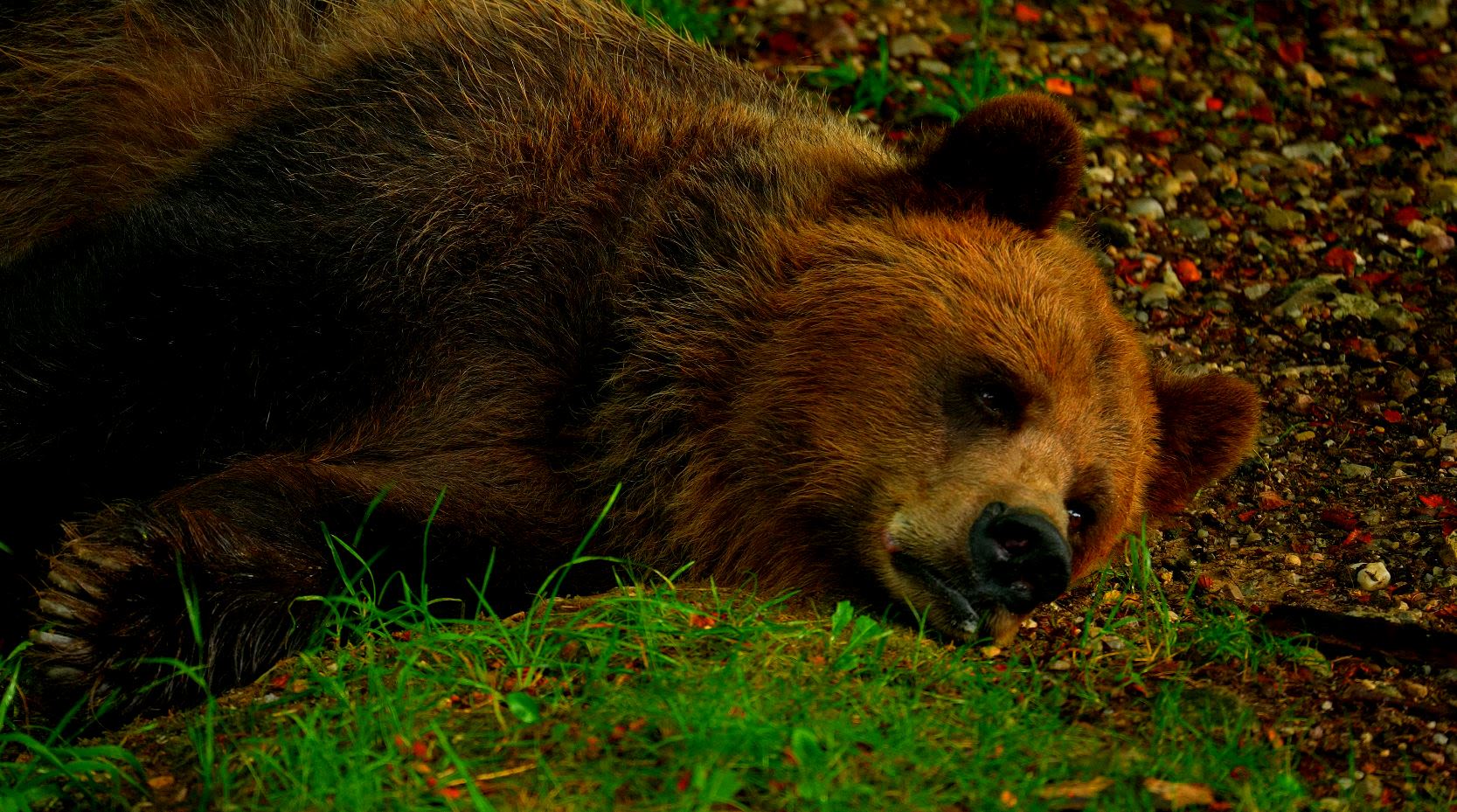
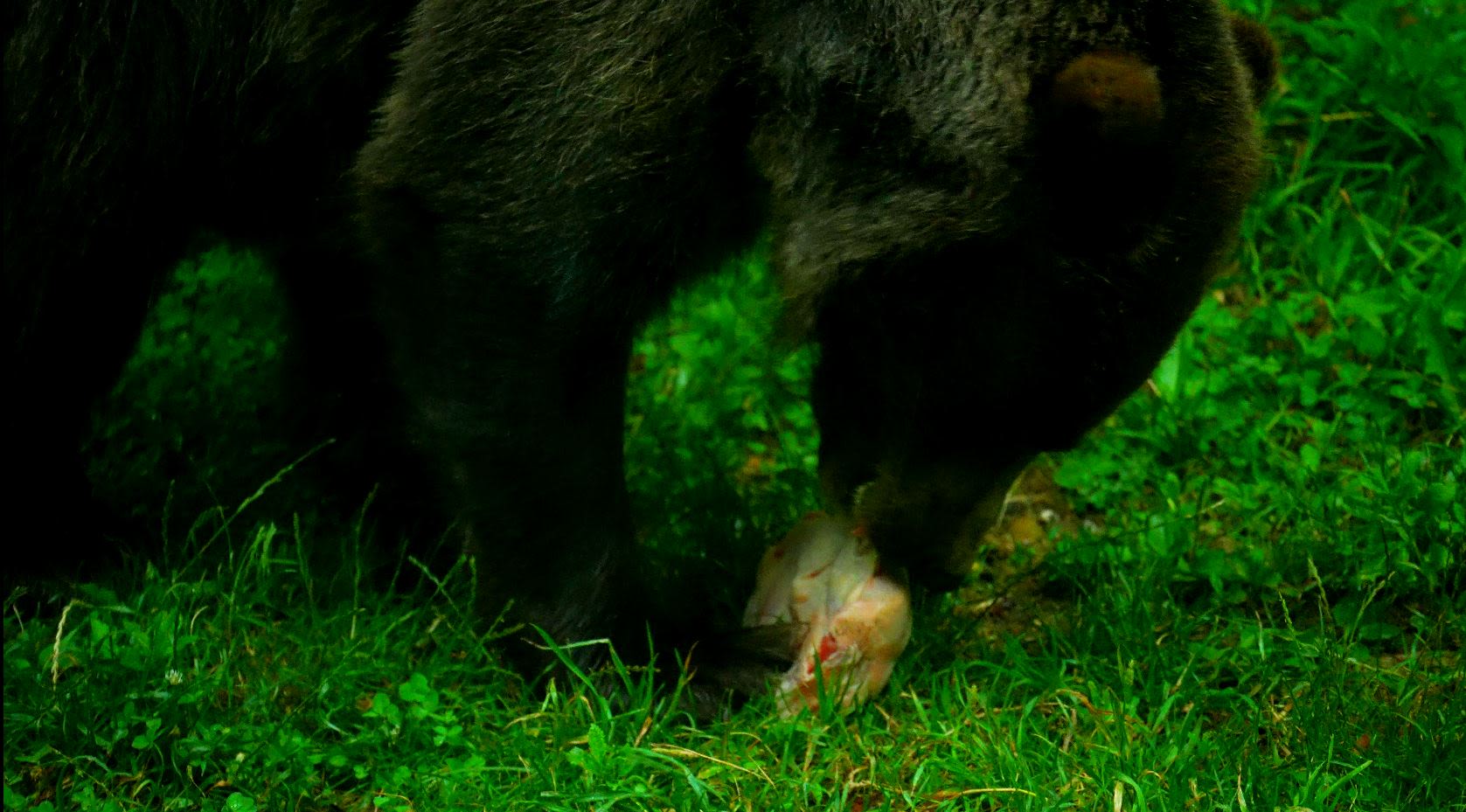
The rewilding dream
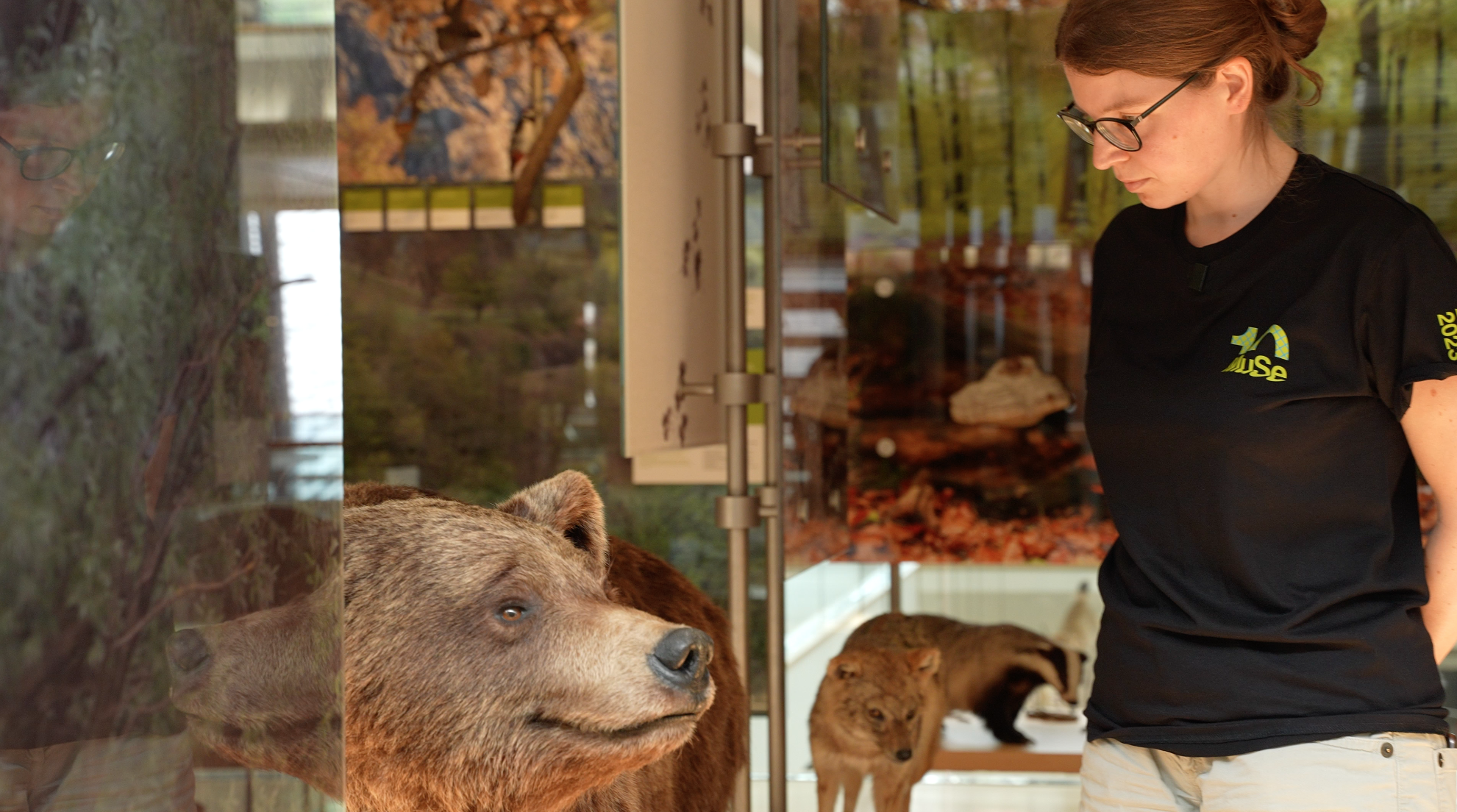
"Society decided to change the perspective towards nature."
The danger goes both ways, says Giulia Bomberi. A large carnivore expert at MUSE, Trento's science museum, she's a specialist in human-wildlife conflict whose team has analyzed several hundred brown bear attacks worldwide. The one-line takeaway? In most cases, bears only attack humans as a form of defense against what they see as a threat.
These interactions with humans are particularly threatening to bears because they usually dominate their local territory – which serves its own function in nature's balance, says Bomberi.
"Large carnivores are really important pieces of the ecosystem because they are apex predators," she explains. "They're at the top of the food chain and they regulate everything under them – ungulates, roe deers, chamois are regulated in population by large carnivores.
"Being apex predators also means they don't have other predators, but there is a huge threat to them, which is humans. And we are the first cause of mortality for all large carnivores in the world."
Indeed, humans have relatively recently wrought havoc on apex predators – be that for self-defense, food or sport.
"Large carnivores like wolves and bears, but also lynx were common in all Europe until the 19th century," Bomberi says. "The main goal of this reintroduction program was to avoid the complete extinction of bears in the Alps."
By the 1990s, she says, the area contained just three to five bears – an unviable number, and one which gave scientists a stark choice.
"We could choose to exterminate them and not have them in the Alps any more. We would have avoided a lot of problems, actually. But at that time, society decided to change the perspective towards nature. It was considered a value to avoid extinction of these predators."
Humans helped bears back to viability. But it was a decision with consequences.
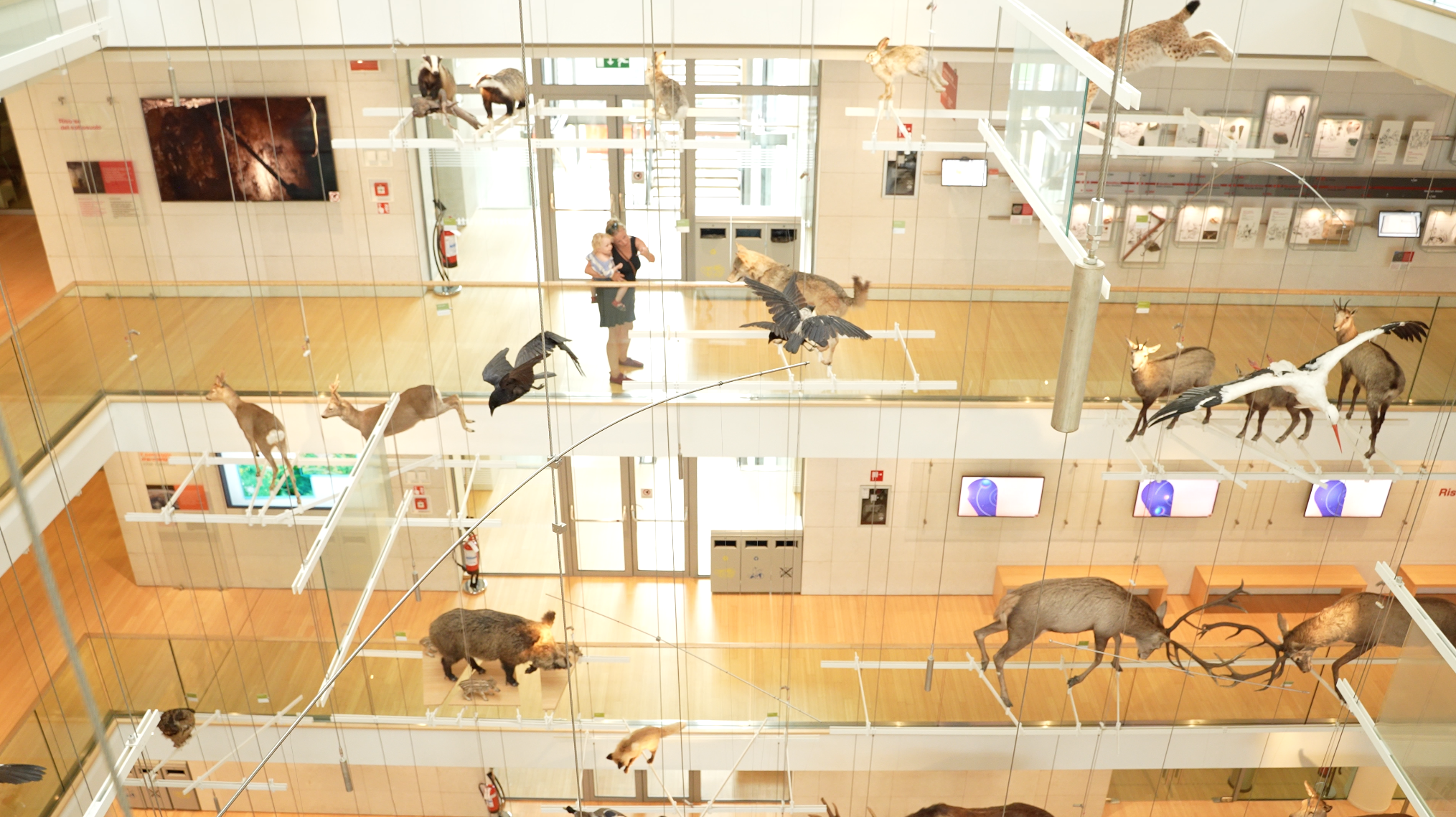
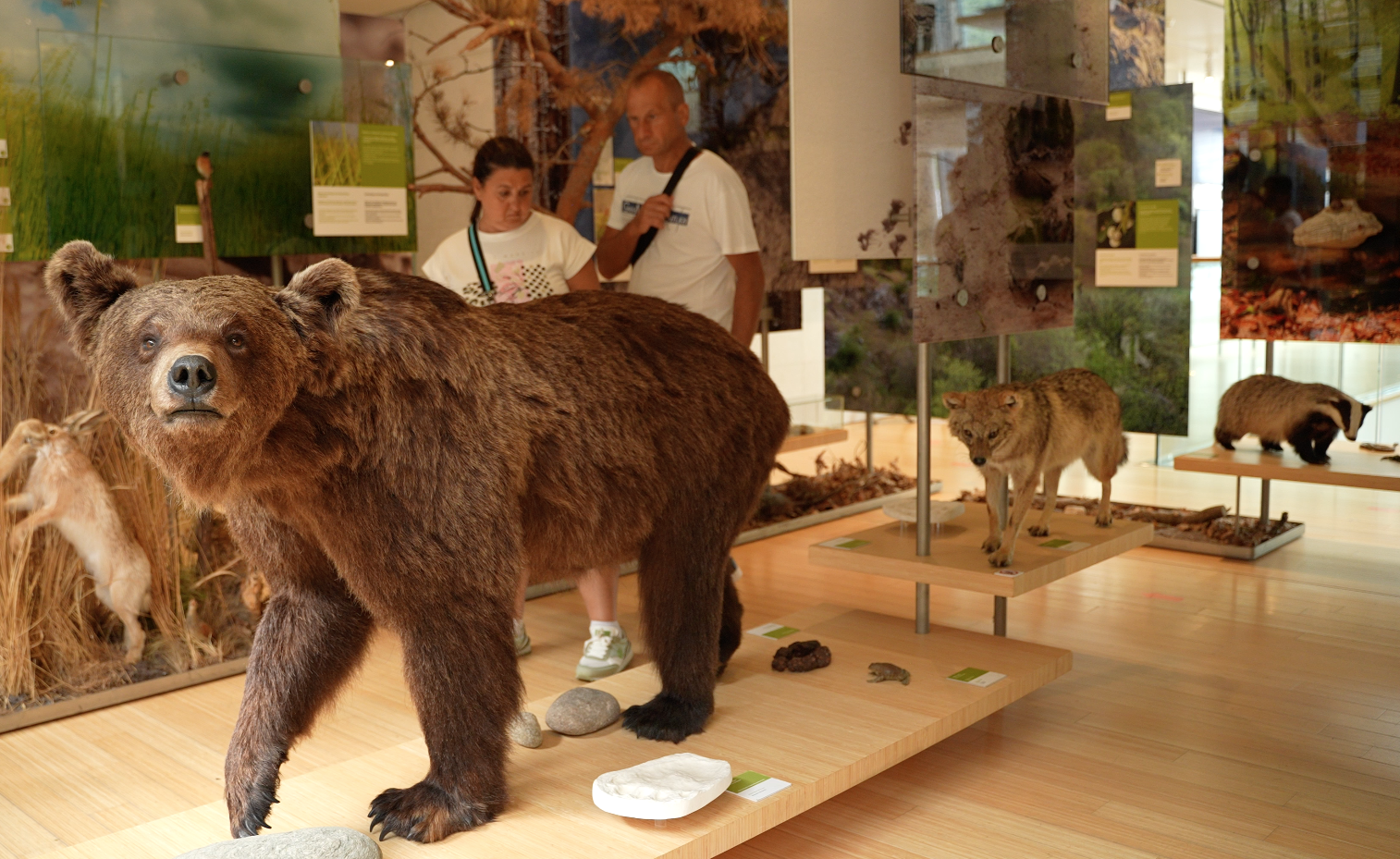
Historically bears were in the northern area of Trentino.
Now they are concentrated in the southern part of the province.
Voxpop: Charia, B&B host
What happens when you're a dedicated animal lover but it puts you in danger?
Chiaria's family have lived among nature in the Val Rendena valley for four generations. A century ago there were very few bears – but then came the rewilding project, and the family's bee-hives attracted attention from their sizable new neighbors.
"One day the bear came to visit our bees – because we've had bees for many, many years. And he practically destroyed the house of the bees to eat the honey.
"For me it's a great thing to have such a big animal in the area, because it was part of our ecosystem before," she says. "We live in the forest, we live in the mountains, but we're not really afraid of the bear because we know that it's part of our mountains. We know that there may be a meeting one day.
"My children? They live here in nature – they know that there could be bears, there could be wolves. They're very excited about looking at the wild. We never saw a bear here, but I think that if they would see a bear from the balcony, that would be a great experience for them.
"When they're in the woods, they're with us. And I always think about the possibility of finding a bear. That's why when I go, I try to talk very loud and to make noise, to look very carefully around me when I hear a noise.
"It's just something that comes naturally when you go, you know that there could be this possibility. So you try to be a little bit more open to everything you have around you – you don't just stroll around with music in your ears and talking on the telephone.
"I pay a lot of attention to what happens around me, especially if I am with the children. And always I have my dog with me. And so if I see that the dog is upset, then I pay more and more attention."
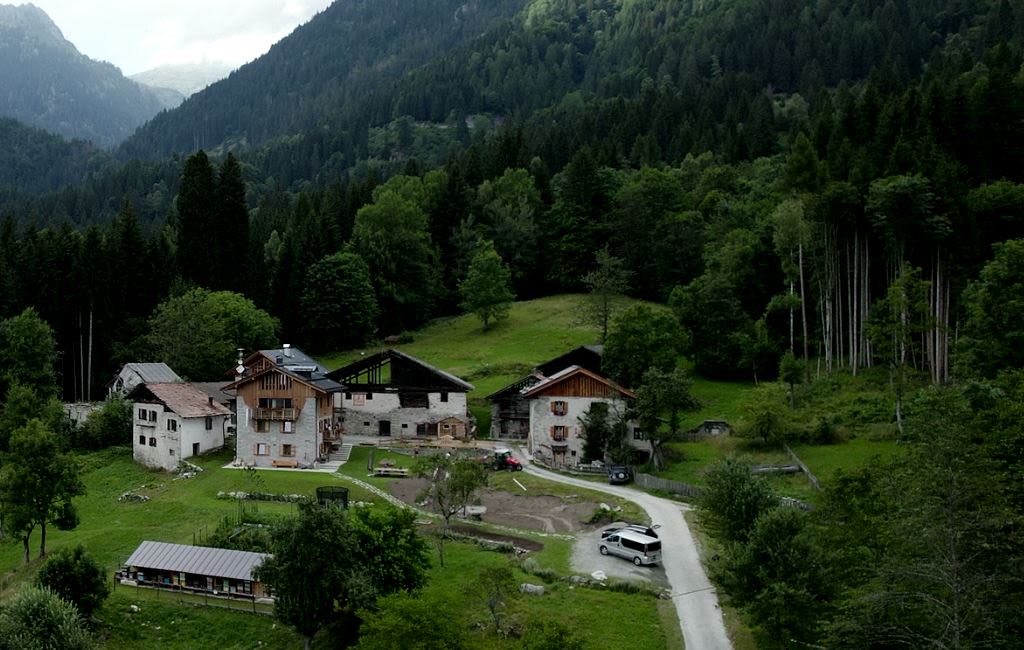
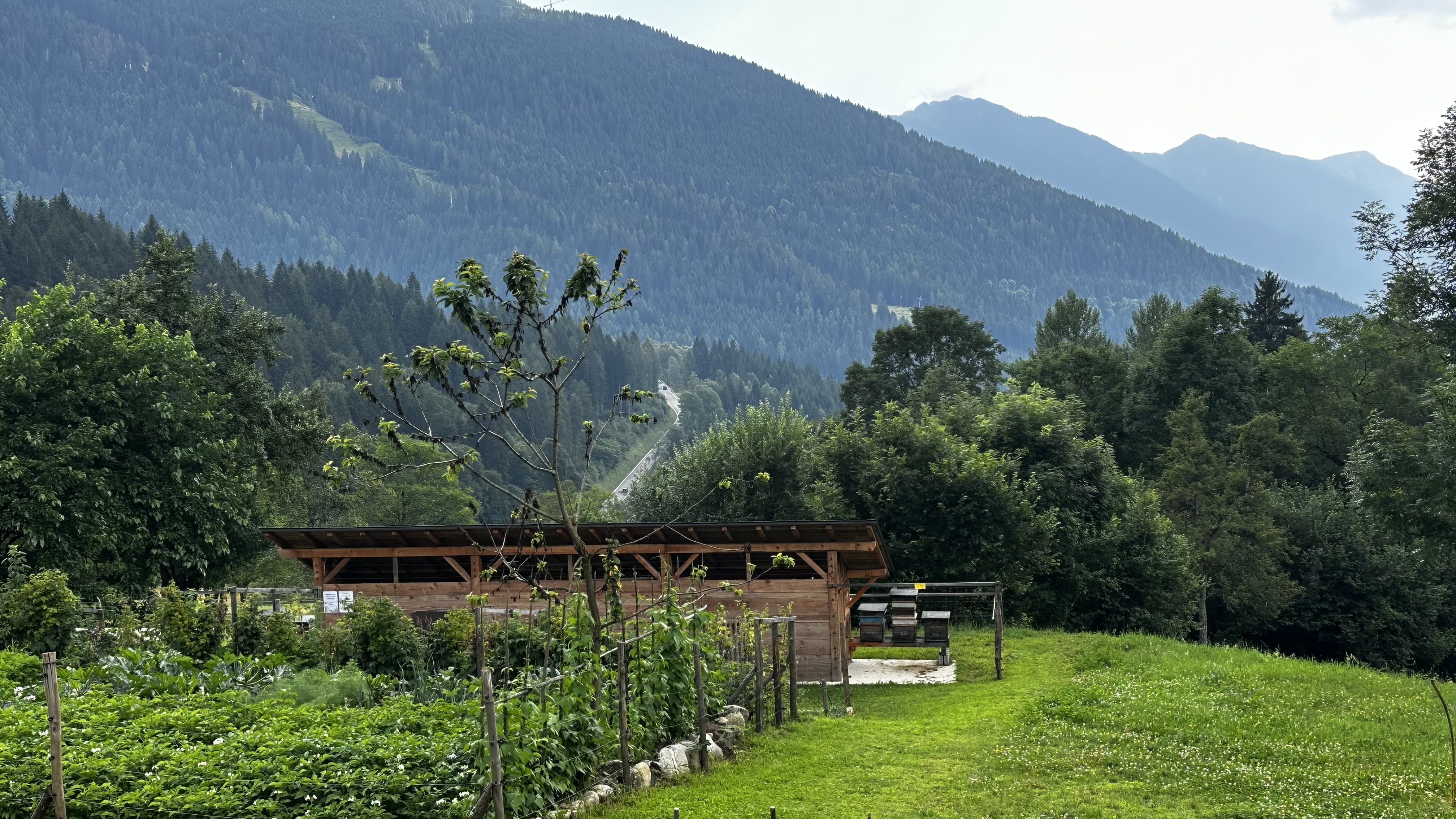
How to handle JJ4
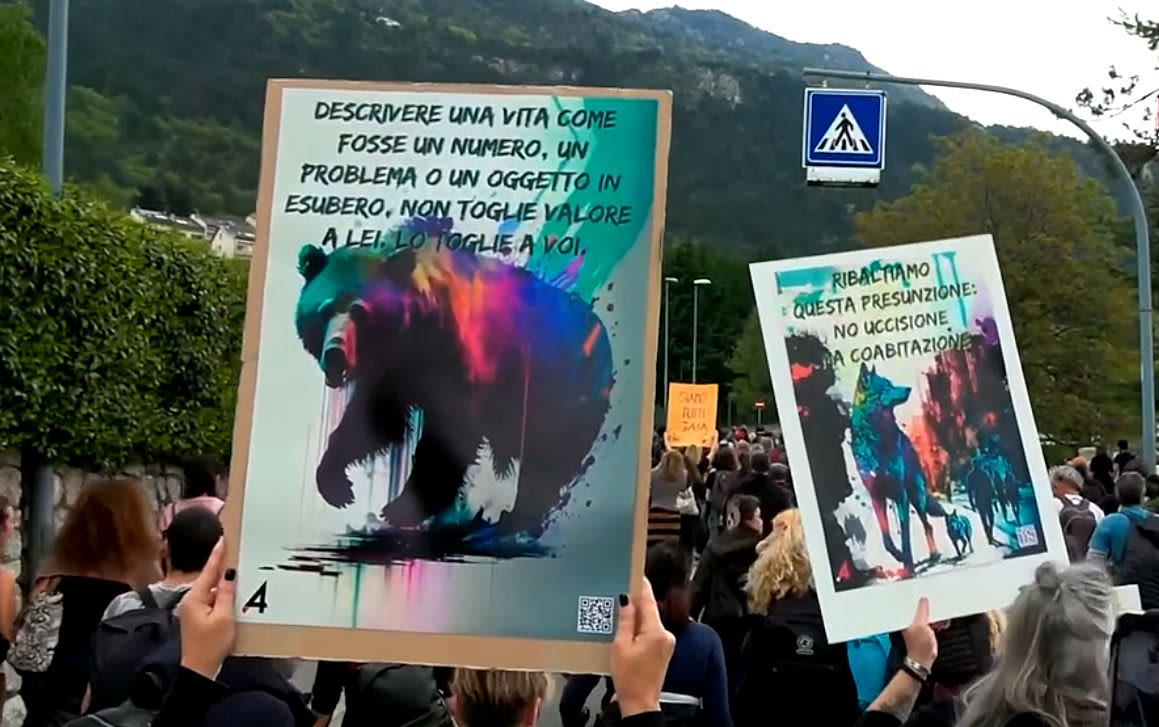
Papi's death was a tragedy, and one keenly felt by Mustoni. Despite being the man who brought bears back from the brink, he's in no doubt that they cannot represent a threat to humans.
"We're absolutely convinced that problem bears must be intervened immediately – and with a certain amount of force," he insists. "They must be removed from the territory very quickly – we must capture them or shoot them, as is done with other wild animals."
If that sounds like a difficult choice for an animal lover, it's not for someone who knows them.
"Personally, I'm more attached to the idea of killing these animals – because I think it's cruel to keep them in a fence for their entire lives. A bear that was born in a free life has very important physical and psychological needs that we must consider."
For Mustoni, food-conditioned bears are inevitably problem bears – and the effects can last for generations, as shown by the traits JJ4 inherited.
"Jurka taught all her cubs to get closer to humans and to use human resources," he says. "This is one of the reasons why it's very important to intervene quickly when there is a problematic bear – especially if it is a girl, because it is the mothers who teach the problem to their children – and remove it from the territory."
But where to? While authorities consider her fate – a decision is expected in December 2023 – JJ4 has been relocated to Casteller, Trentino's Alpine Animal Care Center. But for Francesca Manzini of the Stop Casteller collective, any restricted habitat is a jail.
"Casteller is a symbolic place for us, because it is a prison for bears," she tells CGTN. "JJ4, which we renamed Gaia, has been locked up since April while M49 has been here for three years and has become famous – we call him Papillon, because he has escaped from here twice."
There's a mordant humor in naming a bear after the twice-filmed story of the French safecracker who repeatedly escaped from penal colonies, but the Stop Casteller activists are deadly serious in their intention to protect JJ4 (or Gaia).
"Last week there was a ruling by the Council of State regarding what should be decided about her life – whether to kill her or to continue the suspension of this death sentence for a few more months," says Manzini. "If the news had arrived that there was authorization to kill her, we would have put ourselves here to protect her, to try to defend her life."
Stretching up one of the many hillsides that surround the Alpine valley city of Trento, Casteller was established in the 1960s as a clinic for injured wild animals. The idea was that once recuperated, animals would be released into the wild.
However, if their survival was in doubt, they would remain at Casteller. As we now know, rewilding is a risky business, and not just for the animals. Over the years, more animals have stayed at Casteller – to Manzini's distress and disgust.
"This place was created to help injured or orphaned bears, and has instead become a prison," she says. "We are asking that this place be closed – it does not have to exist."
In September 2020, Casteller was inspected by CITES, the endangered-species watchdog. At that point the compound contained three bears, and a leaked vet report was damning, saying "All three bears are in a very severe psycho-physical stress situation, primarily due to the forced and close coexistence of the three specimens, contrary to what the ethological basis of the species allows."
Two of the bears were relocated – one to the same German park as Jurka. But M49 remained, and was joined in April by JJ4 – imprisoned, says Manzini, who says public information has remained scarce despite the lethal threat of human interaction with bears.
"Is this the current policy in Trentino? This bear management is absolutely delusional, pointless. We don't work to provide information, to prevent accidents. Even after Andrea Papi died, nothing has been done.
"That is what must be understood - it is not that this bear attacked because it wanted to kill, it attacked because in its interpretation – which is different from ours – it felt in danger, it perceived a danger for its cubs.
"It is not that leaving her locked in here is safer. We are punishing her with human rules."
Pugliese, the professor and environmental NGO president, is perhaps more measured in his words but scarcely less damning.
"The introduction of the bears has not been run very well – there hasn't been good communication," he tells CGTN, suggesting that part of the problem has been rival bureaucracies.
"The idea was that from the area where they were released, the bears would spread to the surrounding area," he explains. "The provinces around didn't allow the bears to get in, so the population is more concentrated than perhaps was thought.
"But more than the absolute number is living with the bears around – what you do to allow bears and humans to coexist without many incidents. It changed things quite a bit for shepherds, because they could just leave the animals around without anything. And now you need a lot of things."
In early July 2023 Libearty Bear Sanctuary in Zarnesti, Romania offered to rehome JJ4. It's an option – but like all options, it seems it wouldn't please everyone.
"We are against captivity for life," says activist Manzini. "The most natural thing would be to put it back in the wild. We're aware that this, compared to public opinion, is a strong statement but she is no more dangerous than other bears that are free right now. She simply lives in an area where there are many bears, where people have not been informed about the risks and the bears when they are in the company of the cubs are more dangerous
Mustoni, who brought JJ4 to the area in the first place, strongly disagrees. Indeed, he believes JJ4 should have lost her freedom after the first attack in 2020.
"I think it was a mistake… She had already attacked people and therefore had to be removed from the territory. I am convinced that man comes before bears. Bears are very important in our territory, all in all, also for our future, for our culture and for our approach to nature. But people must come first."
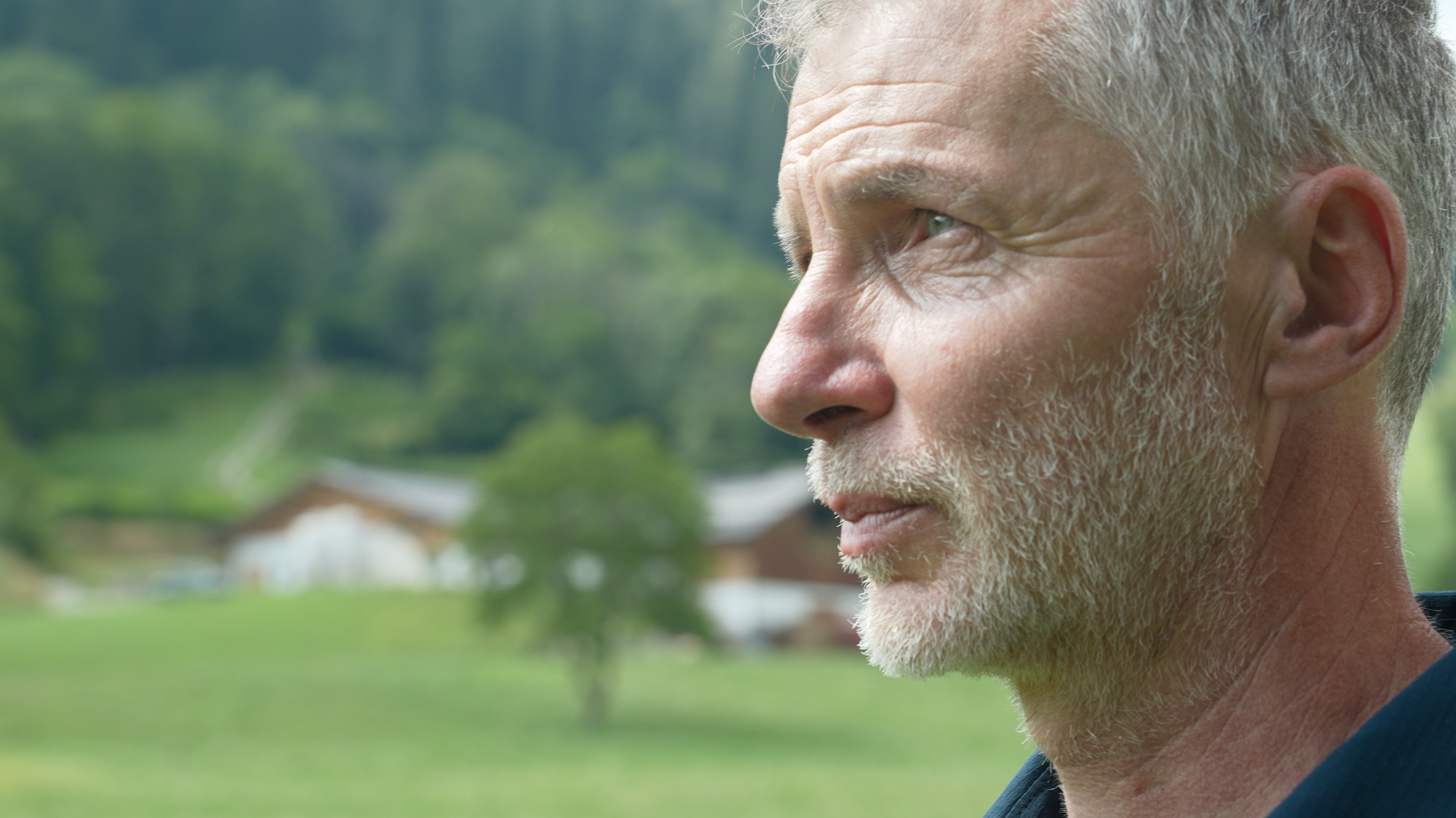
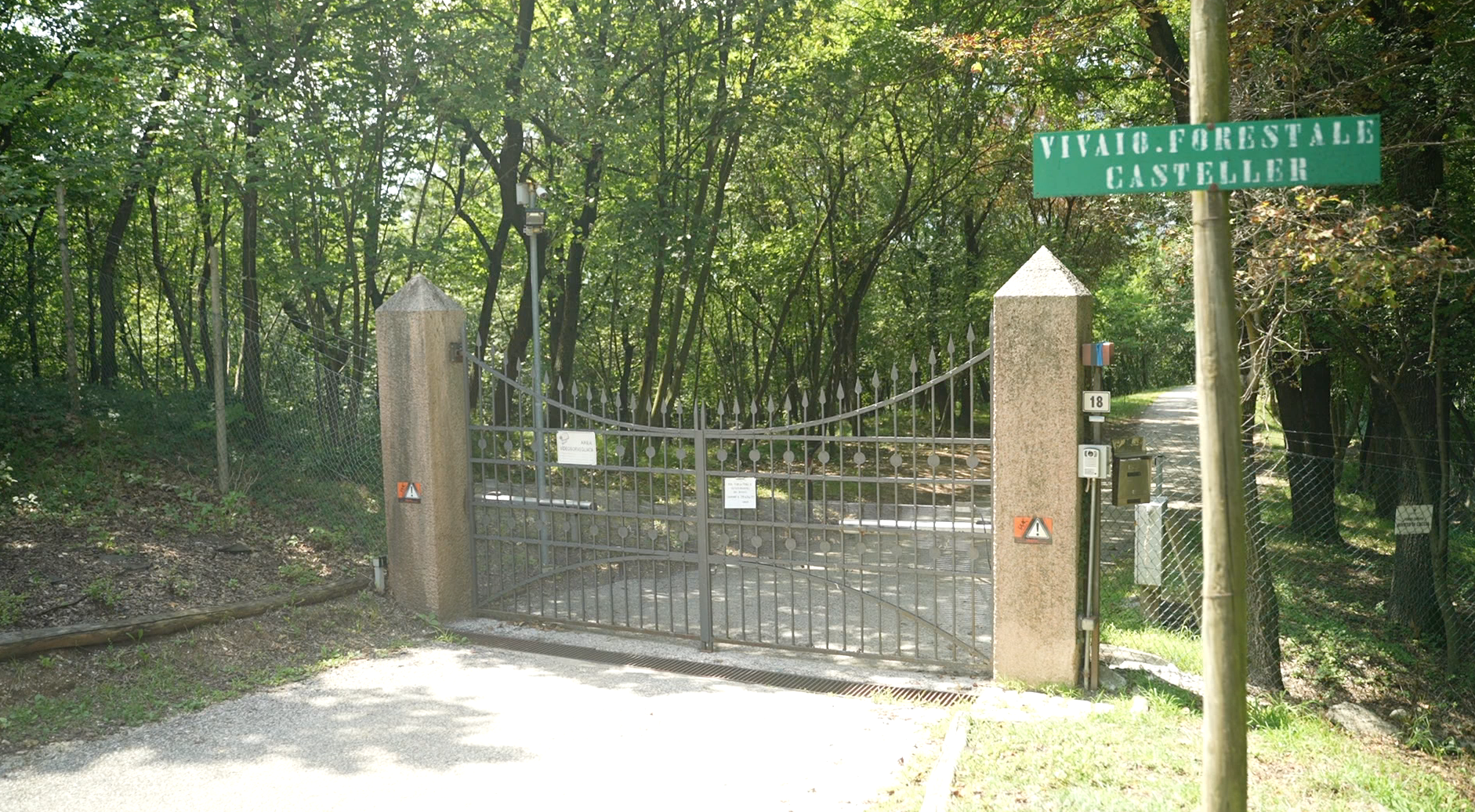
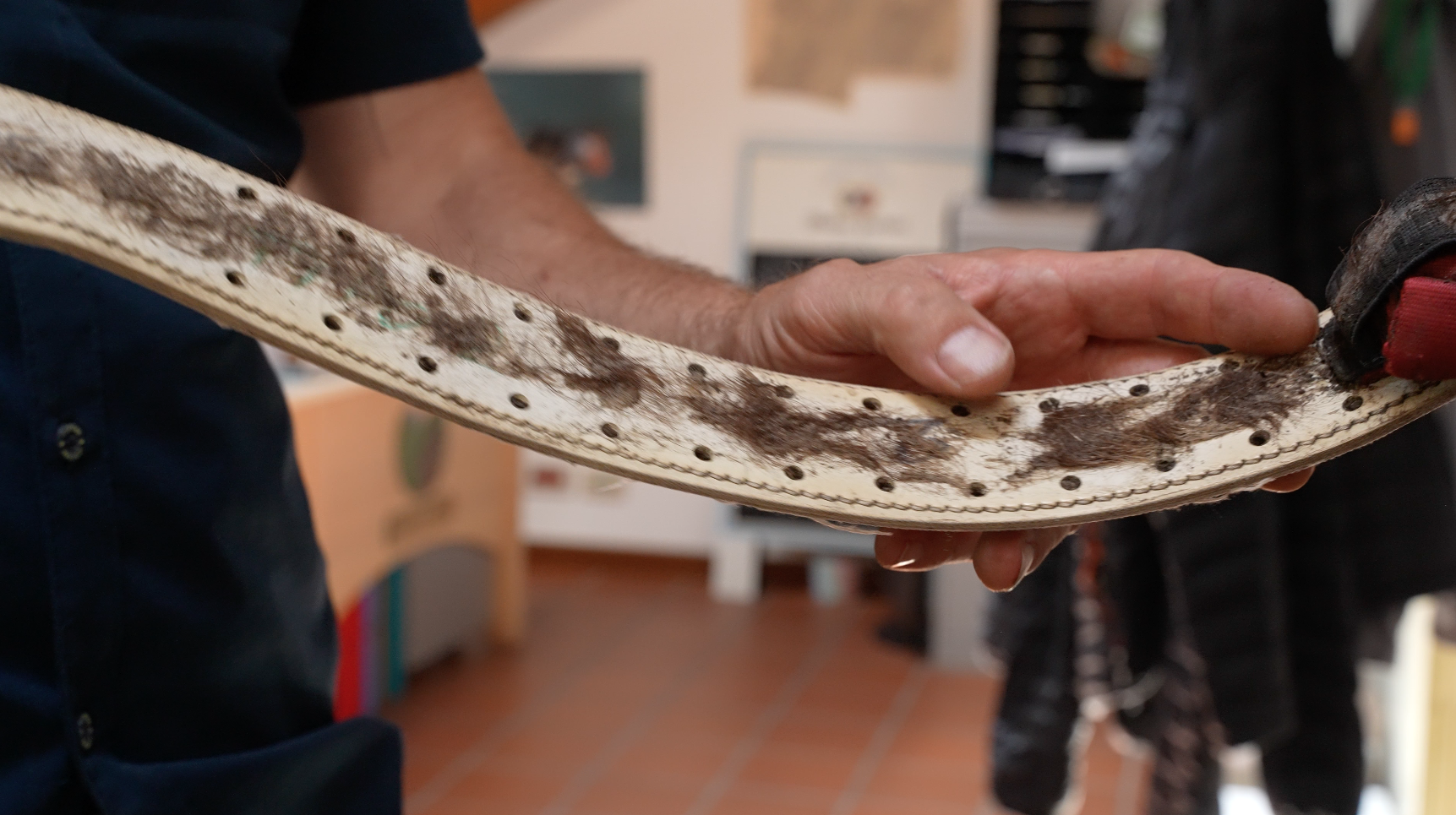
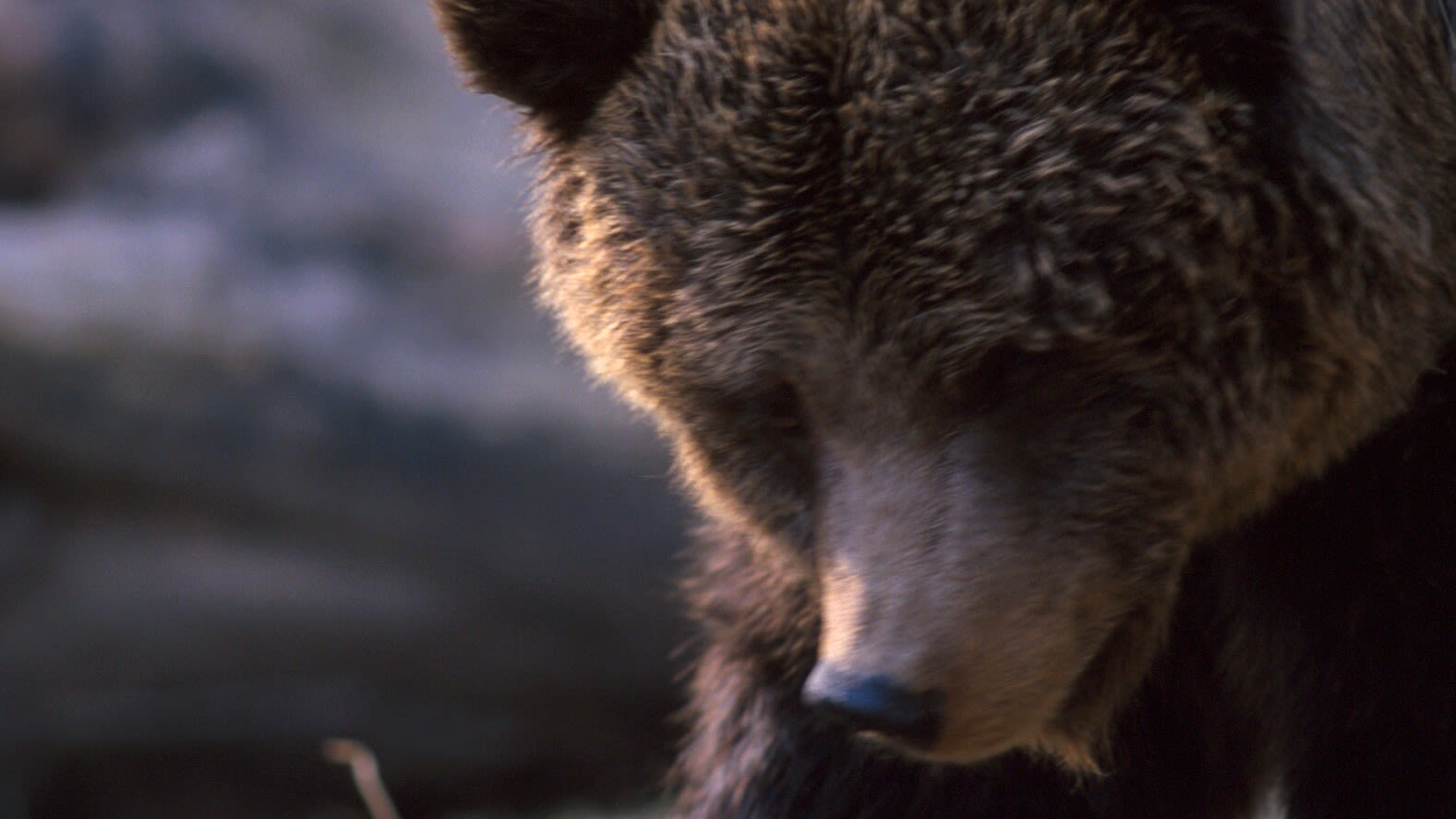
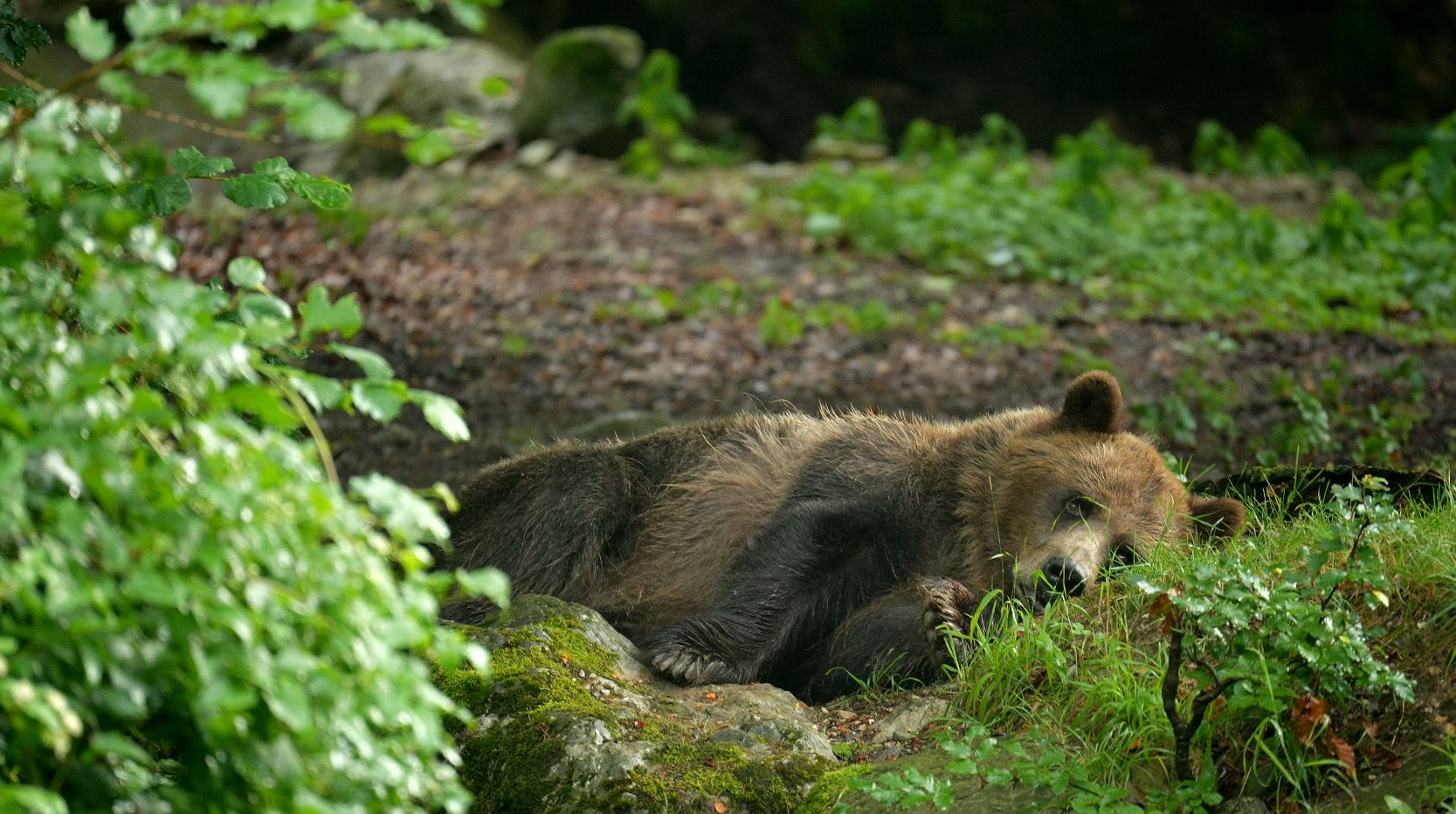
A bear at Belpark, Spormaggiore. /CGTN Europe
A bear at Belpark, Spormaggiore. /CGTN Europe
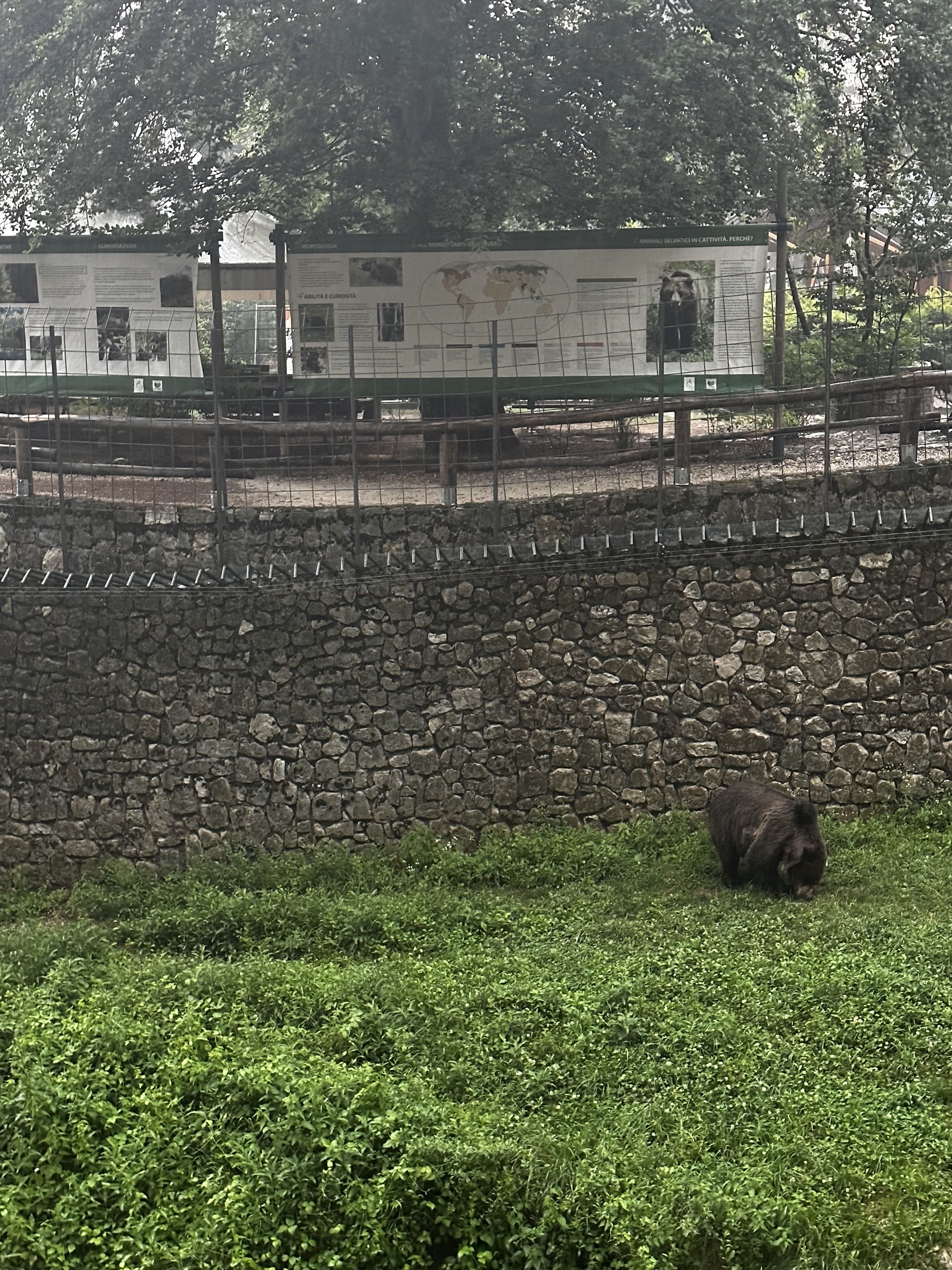
Belpark bear enclosure. /CGTN Europe
Belpark bear enclosure. /CGTN Europe
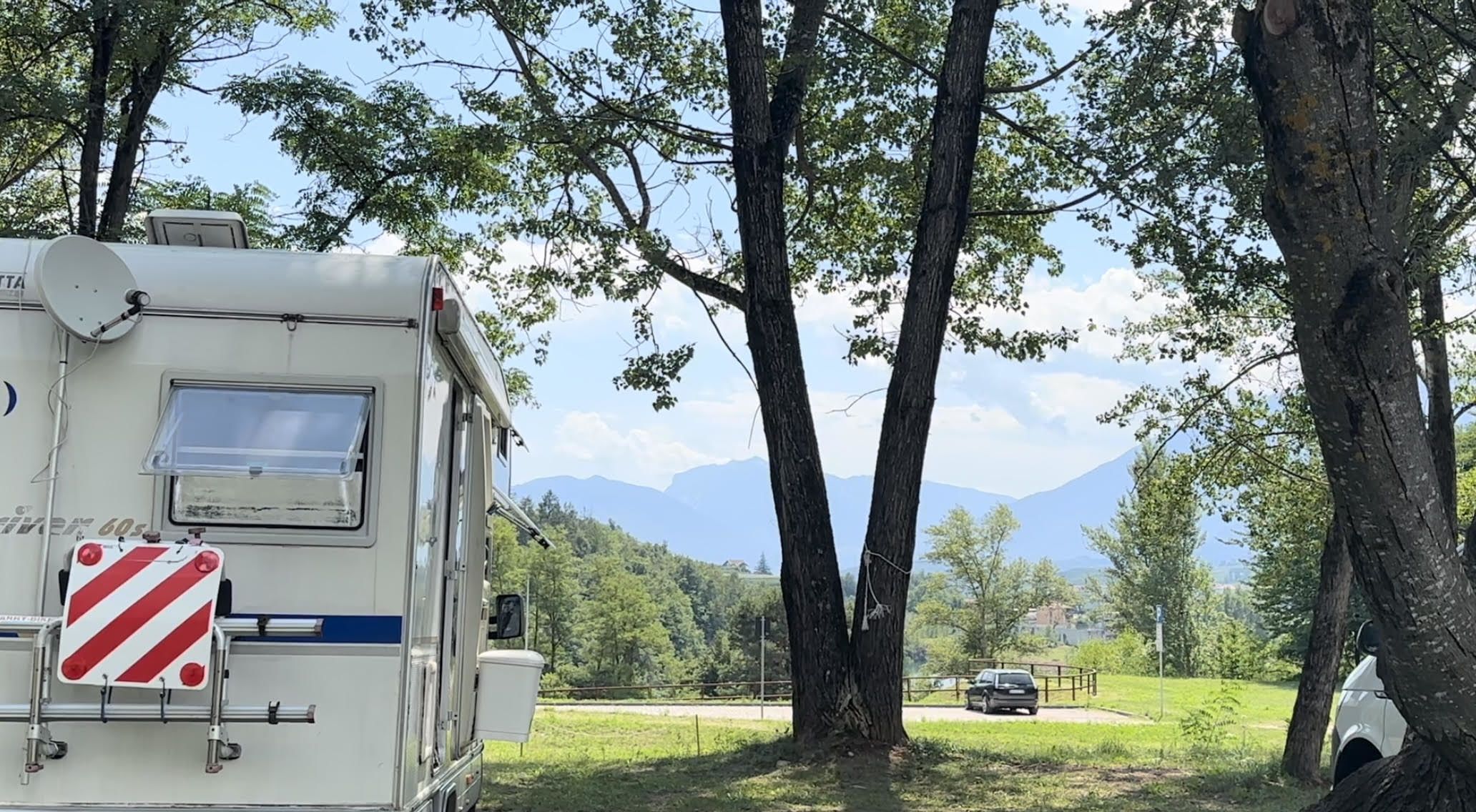
A campervan at Lake Molveno. /CGTN Euroe
A campervan at Lake Molveno. /CGTN Euroe
Voxpop: The zookeeper
Andrea Marcolla runs Belpark, a wildlife park in Spormaggiore. Visitor numbers have doubled in the last 20 years and he says bears are the main attraction. The zoo allows researchers to study bears and offers visitors education about living alongside bears.
The park also supports the rewilding project, but Papi's death has sparked a backlash amongst the locals and they are angry and afraid. Wild bears have also taken to visiting the park's two female bears, easily getting into the enclosure despite its electric fence. Those wild bears are a problem for the locals – especially in the mating season in June.
"Jose is JJ4's father and he comes to visit the females in the park enclosure. Jose was one of the first bears taken from Slovenia. What happened? He was coming here. Coming inside with our females and going outside without any problem. Three seconds to go in, three seconds to go out – with an electric fence? No problem.
"Our center is important for the culture, for the school. We do very important projects for universities, a lot of students come here because they are studying biology and they want to learn [about animals in their habitat].
"Nobody thought that after only 20 years we would have such a lot of brown bears here. They thought that they would move into another region, but they didn't go away.
"I understand the political side, that is not so easy, because I am taking care about these attacks and the people that are not happy – it's not easy. We have to find a compromise, and the only way is education.
"Since [Papi's death in] April, it's changed the life and the mentality of the people of Trentino. They are a bit more scared."
Voxpop: The tourists
What about the views of the tourists who are so important to the local economy?
Franz, from Frankfurt, is just about to cycle into the woods when CGTN asks him if he's worried about meeting a bear.
"I think it might be quite dangerous if you come close to it," he admits, "but OK, it will never happen, I'm sure."
By contrast, Jessica from Bordeaux has changed her behavior. "Usually we're going into the woods with the dog unleashed," she says, "but that's something I don't do any more at all."
Other tourists arriving at Jessica's campsite are unaware that there are bears in the area. Tom, from Poland, says "I think you're kidding me" upon learning of Papi's death, but remains calm.
"We have bears in Poland, but we didn't yet have accidents like this," he says. "Joggers should be aware of situations and be prepared. I know there are voices that the bears should be removed, but I don't think it's the right approach – it's their territory, their forest."
Problem bears
Bomberi divides problem bears into types – those grown bold through being food-conditioned, those regarded as 'damaging' for attacking livestock ("this is, of course, a natural behavior"), and those who attack humans.
"But a bear that attacks doesn't need to be a bold bear or a particularly aggressive bear," she insists. "Scaring a bear, finding a bear very close by, can stimulate an aggressive reaction. We found that more than 50 percent of the cases were involving females with cubs – more defensive and more aggressive, and this is a natural behavior."
But how big is the problem of problem bears in Trentino? "Usually two, three or four bears maximum every year. In other European countries, attacks are more common – there are more bears and people do more risky activities, for example hunting.
"Bear attacks are not an Italian problem, not an Alpine problem – attacks happen everywhere where bears and people live together. We have to take this risk into account – we can't say, 'OK, if we do this, this and this, we will reduce the risk to zero.' This is impossible because even when you behave in a perfect way, you can still be attacked by a bear.
"It's also a matter of personality. Some bears become bored and more prone to approach villages and people. Some bears like meat and livestock more than other bears. There are bears that are all shy that you never see around. So it's usually very few bears that show problem behavior."
At this point, we come across a long-discussed scientific and sociological conundrum. Is behavior genetic or learned from your upbringing? As many modern scientists do, Bomberi sees both sides as important.
"It can be both," she says. "Usually in the animal world, it's a mix between genetics and learning, especially in bears that stay up to two years with the mother so they can learn problem behaviors. We had more than one example in Trentino where cubs of a problem female also became problem bears. This is not automatic – animal behavior is complex."
And we're back to the lead bear in this grim fairy tale.
"JJ4's story is quite interesting because her siblings all were problem bears at some point," recalls Bomberi. "One was shot in Germany, one was shot in Switzerland, they were all cubs from Jurka - one of the bears that was reintroduced that also showed problem behavior. She was bold, she was going to villages to find food.
"Actually, JJ4 was the only one of the siblings that didn't show any problem behavior. She was very shy. She didn't show up and she was avoiding humans a lot. The thing is that at one point she was involved in this aggressive reaction to humans and she attacked twice – first in 2020 and now this year. So she displayed aggressive behaviors."
So will this trait be passed on to her own cubs? "We don't know – they're too little now. We will see; time will tell."
Pugliese, of the environmental NGO Legambiente, would like to widen the conversation from the specific to the general.
"Our focus is not really on the individual bear," he says. "but on the population of the bears and on the environment.
"Removing a bear that is seen as dangerous from the environment is something that needs to be done, is part of the project.".
But Pugliese knows that the question arouses very different, but fervently held, beliefs and suggestions.
Manzini is adamant that Italy upholds its environmental responsibilities..
"A bear is a protected species – protected at a national level, at a European level," she insists. "Thankfully, there are still protective laws. Because right now the politics of Trentino are using a tragedy for which it is largely responsible – because the responsibility to inform the population was certainly of politicians and not of animal rights activists – they are using this tragedy only to make propaganda, because in three months there are elections in Trentino and therefore they are using what happened as a commercial."
And the politicians of Trentino are far more than bystanders. The Life Ursus project officially ended in December 2004, and management of the bears was handed over to the province. The MUSE science museum monitors the bears in collaboration with Trentino’s Wildlife Department – who identified JJ4 by comparing genetic material found near Papi's body with existing data.
But the overall direction comes from politicians, who are ever sensitive to the local mood – which has darkened since Papi's death. The provincial president signed a euthanasia order for JJ4, and although a successful appeal from lawyers funded by animal rights groups granted her a stay of execution, Mustoni accuses the province of not maintaining the standards set by his Life Ursus project.
"Until 2004, we monitored the bears directly with radios, collars and with field activities,” he says. In the years following 2004, it was the Autonomous Province of Trento, in particular the forest services, that managed the monitoring of the Trentino bears."
Aware of what he is going to say, Mustoni chooses his words carefully.
"What I know is what I can tell. This is what my colleagues from the Autonomous Province of Trento did, who captured JJ4 and placed a radio collar to be able to follow it over time. What I also know is that this radio collar had bypassed the batteries and that therefore, from a certain point on, it was no longer possible to follow it."
According to Mustoni, the batteries ran out just before JJ4's second attack – the one that killed Andrea Papi.
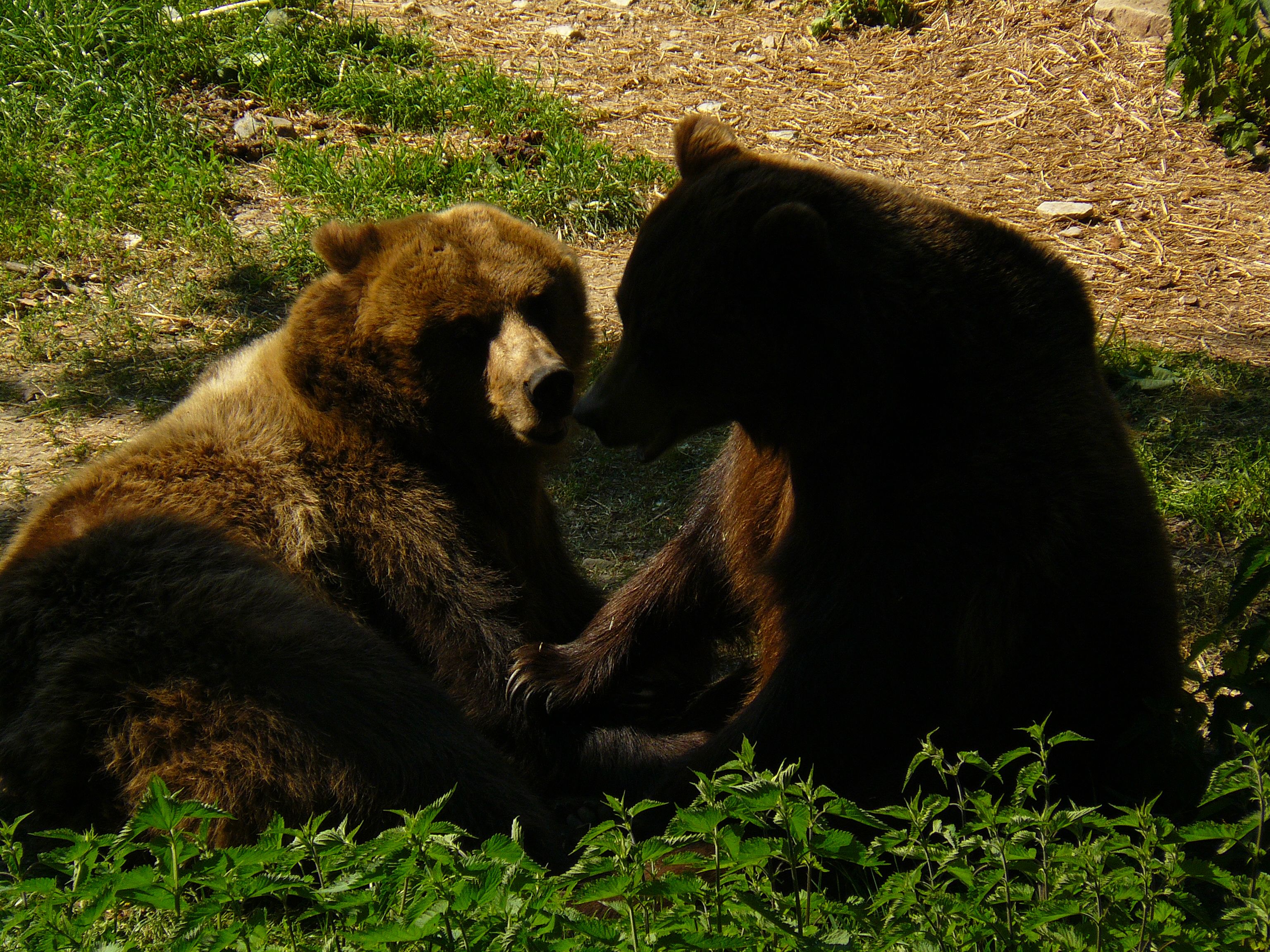
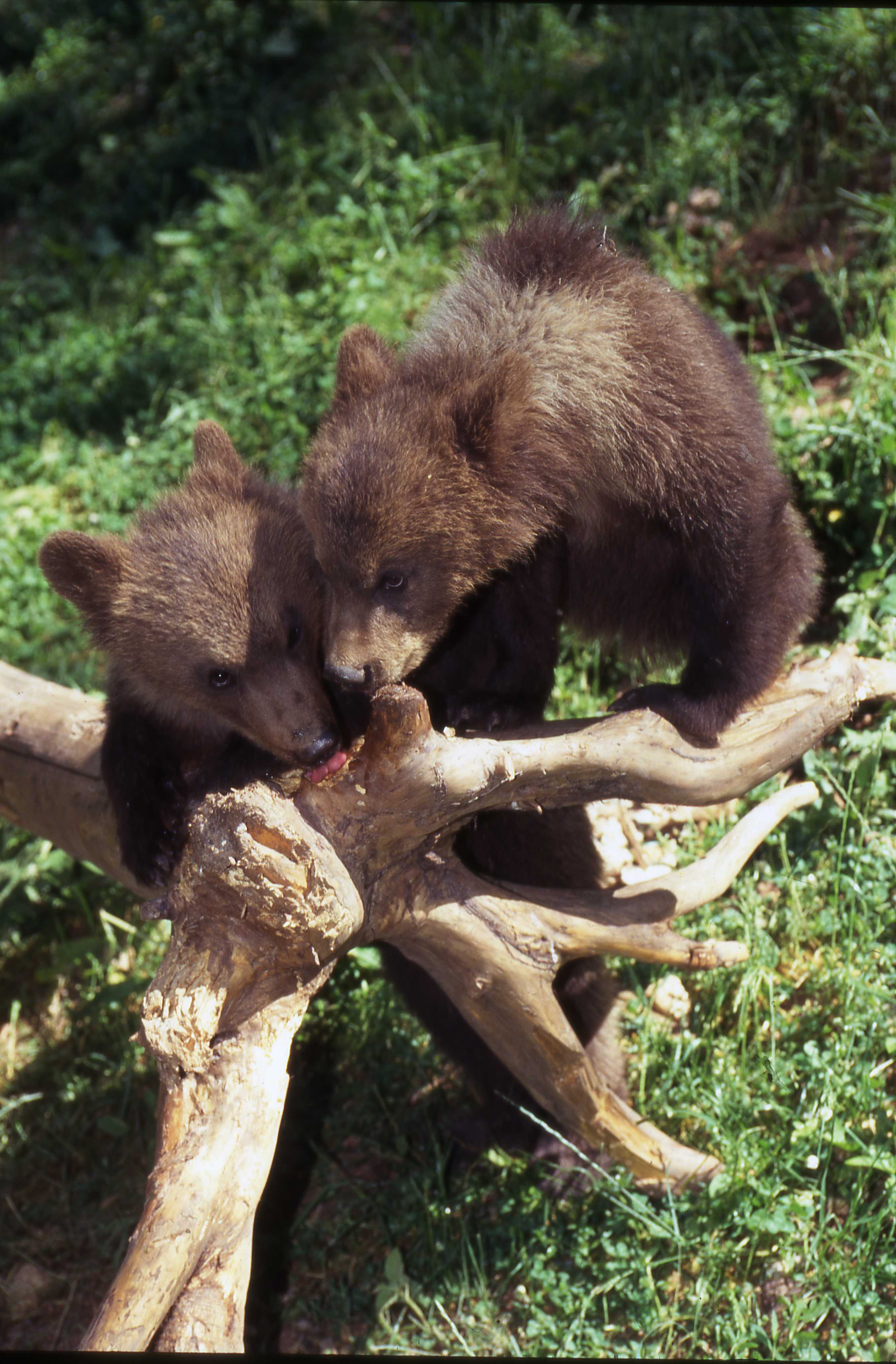
The politics

Mustoni worries that problem bears are turning public opinion against rewilding.
"The presence of bears in Trentino is much discussed and after what happened on April 5, there are many more people who are against the presence of the bear. So the damage to the project was very great."
Professor Pugliese agrees – "There was a poll when they were introduced, and I think that 75 percent of the population of the province were in favor of the reintroduction. Now it would be different" – and notes that politics plays its part.
In an era of rising populism, some local officials have been accused of using bear attacks for political grandstanding. Maurizio Fugatti, the president of the Autonomous Province of Trento, has been particularly vociferous, saying of JJ4 "I'd shoot her down tomorrow morning if they let me."
Pugliese, while endeavoring to remain neutral, says that the Trentino administration has "been using this politically as something to go against Europe and the environment and things. It hasn't been trying to avoid problems, only shouting that there are too many bears and the province had to be free to do what they wanted without any restrictions."
He suspects some politicians have made the age-old calculation that division and fear is more electable than finding solutions, such as minimizing the potential for accidentally food-conditioning bears: "Simple things like discussions about garbage containers weren't done and instead it was preferred to keep an alarm."
As the recent pandemic proved, warnings can also be framed in two ways: fear-mongering or information-spreading. Back at Casteller, activist Manzini would much prefer the latter approach.
"There should have been precise information about the fact that there is a bear with cubs, a bear that had already demonstrated that it reacts strongly when it feels scared,"

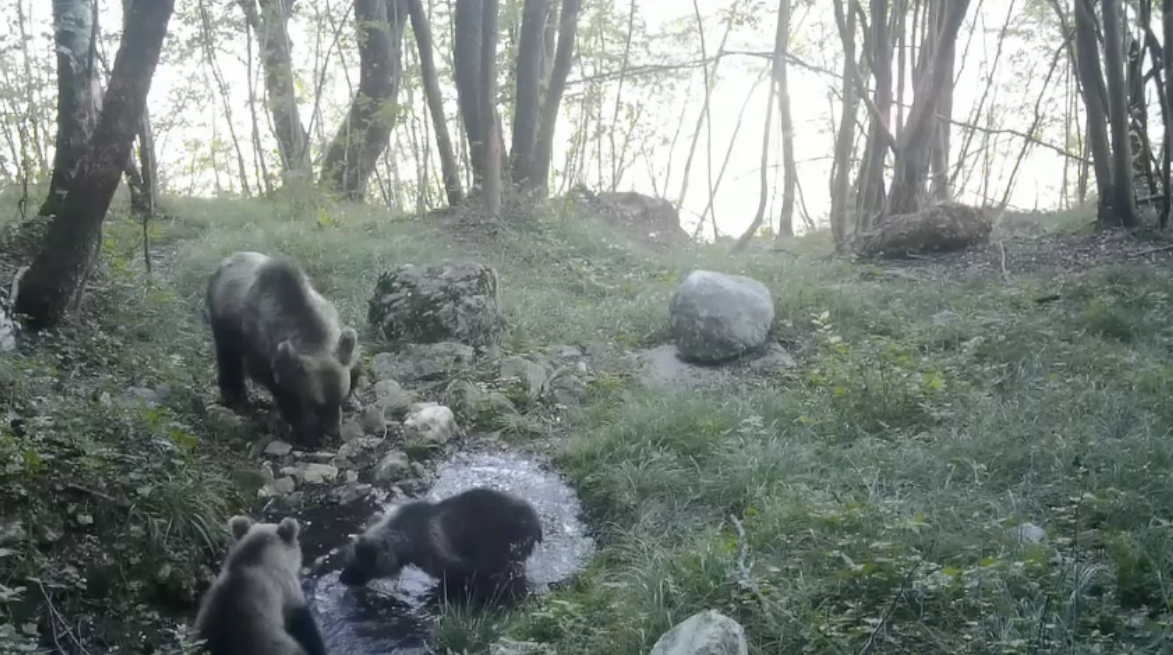
Voxpop: Italo, Spormaggiore villager
Italo is a local in the valley below the Spormaggiore wildlife park. In 2022 he counted 17 bears in his garden – including one which got a little too close for comfort.
"I turned around and the bear was just there. I thought to myself, 'That's it, I'm finished.'
"I don't let my grandchildren play outside any more. Last year a female came with three babies, then two hours later a female with two cubs on the same day! If a bear comes to my house, I will have to kill it because it robs us of our freedom.
"I used to go into the woods to pick mushrooms but it's been three years since I've gone. There are at least 150, 200 bicycles pass by in a day. There is a path and then the bears come. There is nowhere for them to go, they have to go somewhere. There's nowhere else to go, there are too many of them. "
Voxpop: Ilenia, Caldes resident and friend of Papi
Ilenia is a resident of Caldes and a friend of Andrea Papi. Like many in the village, she clearly recalls the worry of a resident going missing and the horror of his body being discovered; like many, she is concerned about what happens next, and lacks faith in local governance.
"When he disappeared, all his family was up here waiting for a call from him. They found him in the night. They used the dogs, they followed his [scent], the dogs smelled it and they found him – because he was on the street and the bear carried him down to the woods.
"The fear is always there because you don't know – you're running down or walking down a street and out of nowhere… We know that we're supposed to stand there and don't do anything, but you don't know your reaction when you see a thing like that. Maybe the first thing that Andrea thought was to run away because he thought 'I run every day' and thought that he could survive. But the bear is very fast.
"The bears are more aggressive, I think, because they always have babies with them. We're all terrified, but also we don't know what to do because the province, all the important members of our region are not doing anything.
"[Villagers] want justice. They want these bears moved to other parts, go back to Slovenia or maybe go in our protected area where people don't go, because it's a problem.
"A long time ago, it wasn't a big problem. But now that it killed a person, we are worried about it. I'm not against bears – it's their nature, they live there, and we cannot move them to another place. Because now there are many, like 100 only here in this zone, and it's impossible to move them away. We will try to live with them and we hope that they don't kill another person."
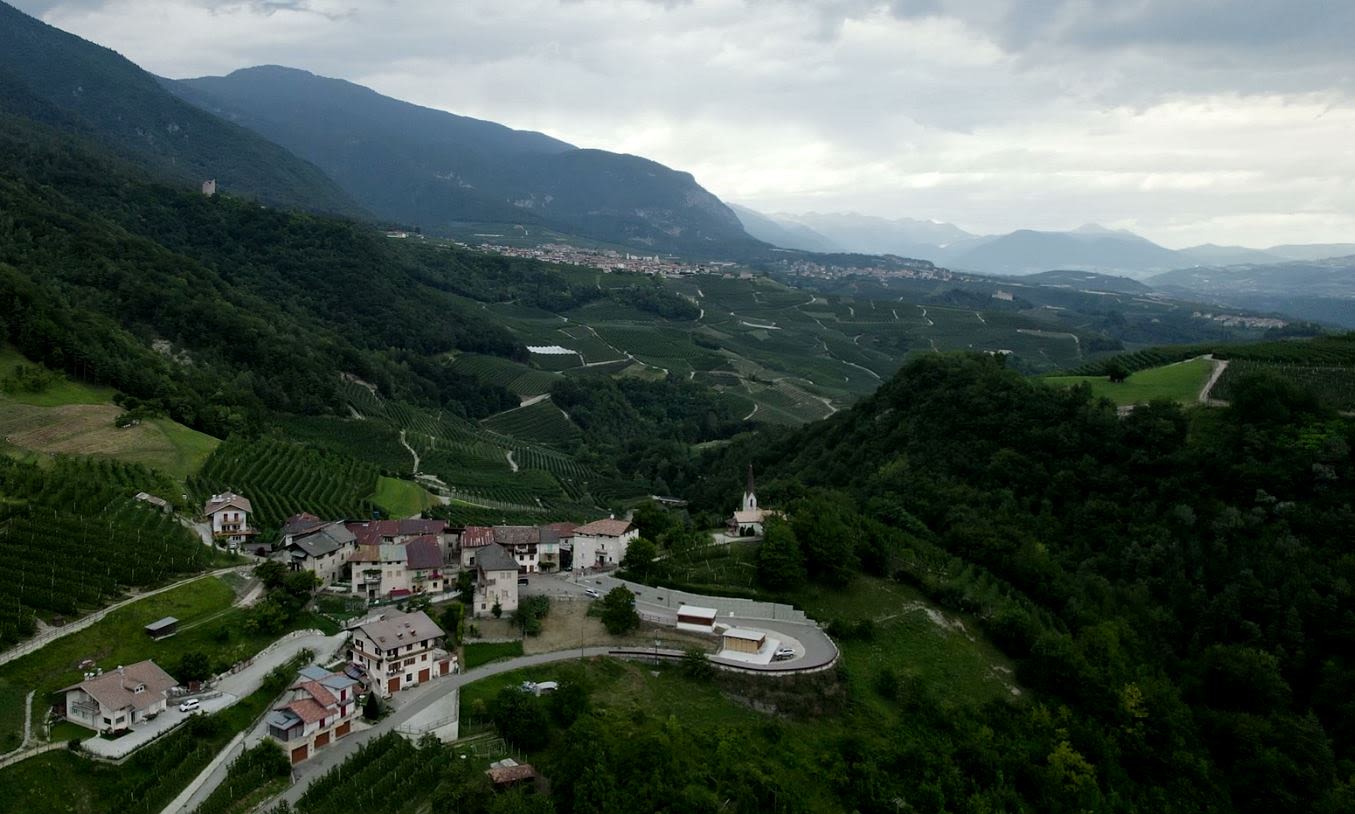
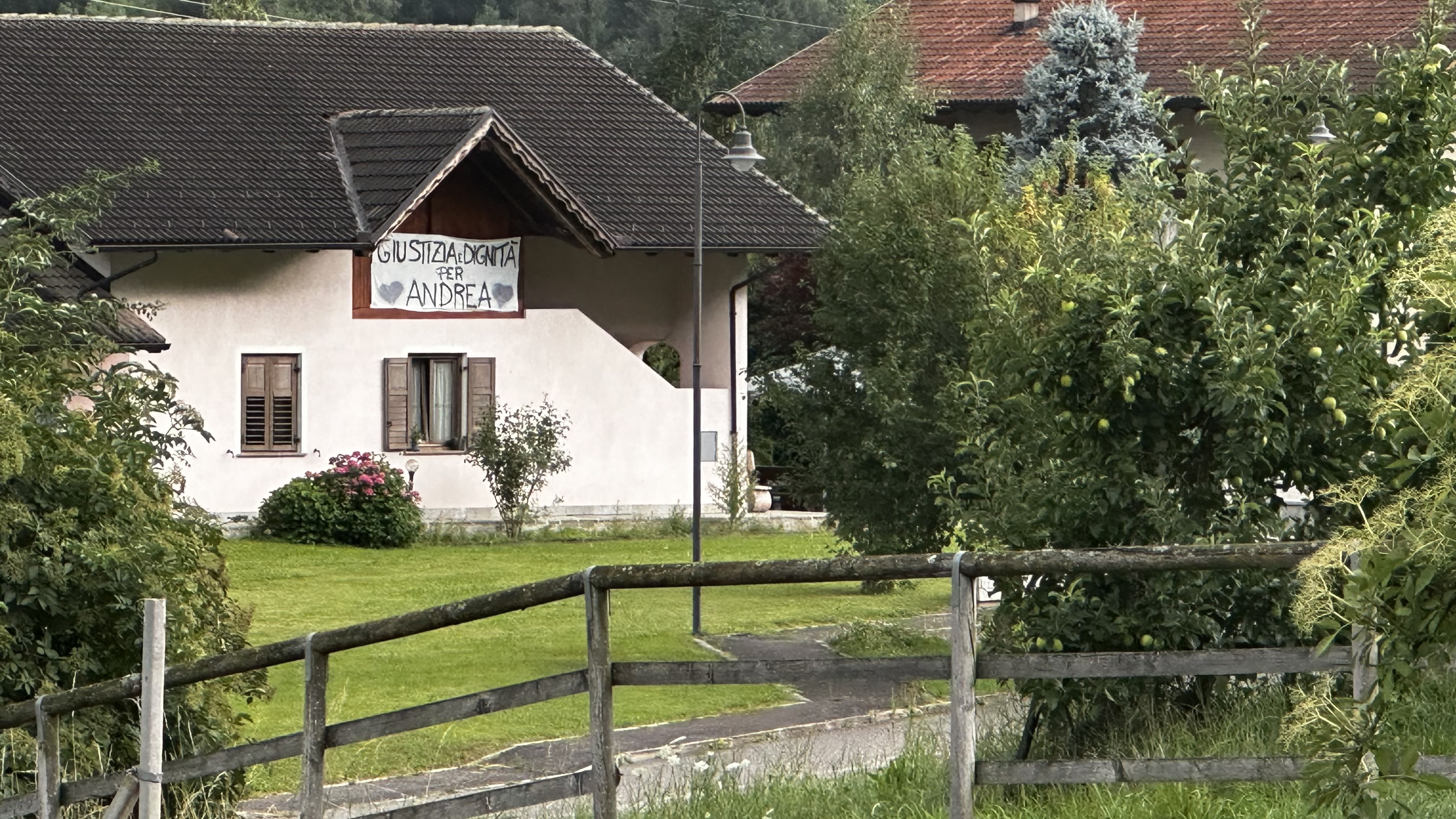
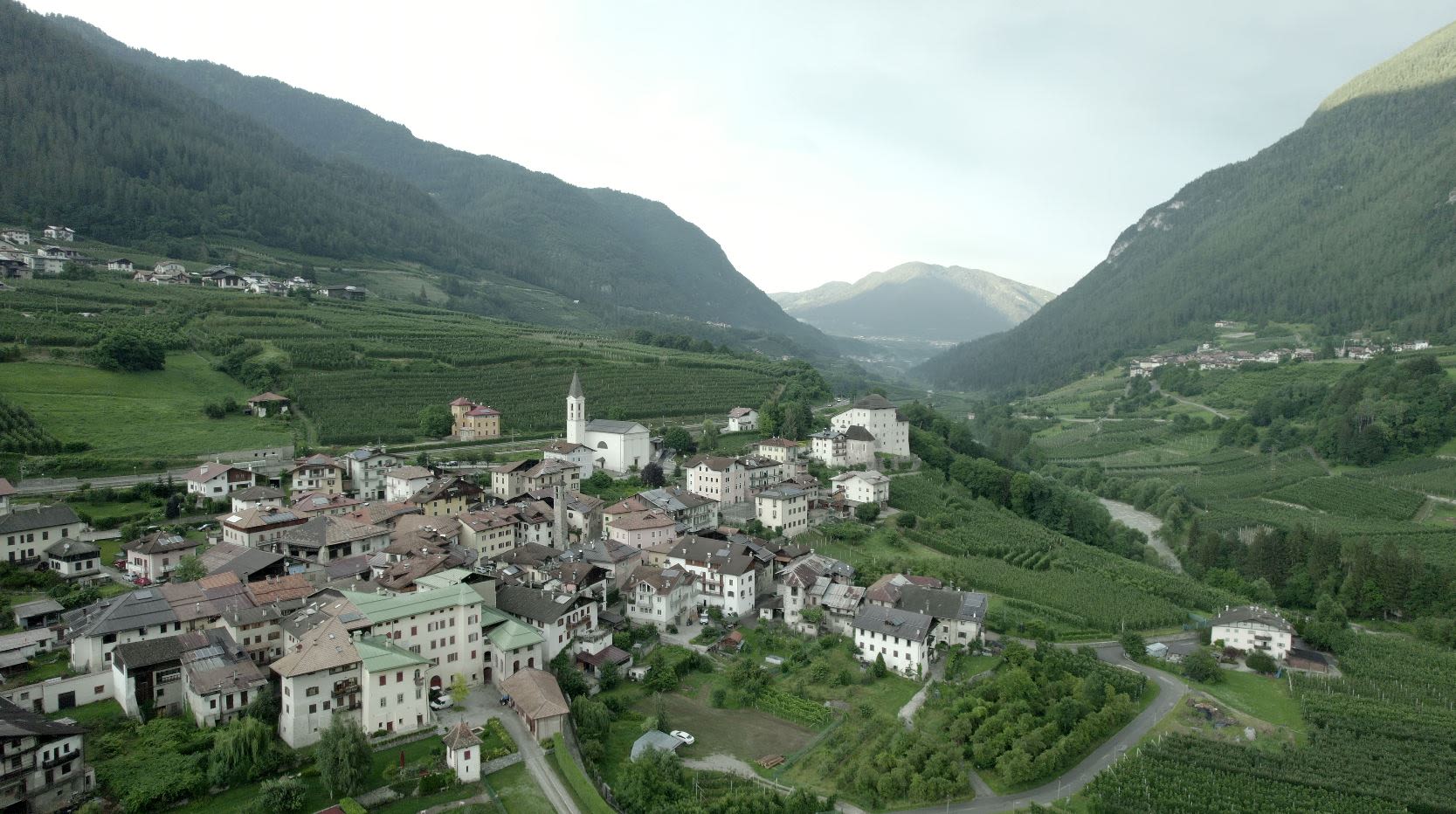
Poor communication in Trentino could have been avoided by asking Bomberi, the expert at the local science museum.
"Communication is a fundamental part in large carnivore conservation," she says. "Stakeholder engagement – talking to people and communities.
"It's obvious that where bears are present, we cannot do everything we want. This is something we find challenging as human beings – we are prone to think that we can do everything we want, we can use the mountains as we want, to go around at any time alone.
"Bears challenge the power that we think we have in nature."
They have also challenged the assumptions made even by the experts who have started to rewild them. Mustoni says that at the start of the Life Ursus Project, they aimed for a "minimum viable population" and pegged this as "about 40 to 60 bears."
And now? "Without a shadow of a doubt, right now we probably have between 120 and 140."
This is what enraged the local provincial leader Fugatti into his offer to personally kill JJ4.
"The problem isn't the JJ4 bear – that ends up as it has to, I'd shoot her down tomorrow morning if they let me," he said. "The problem isn't her but the approximately 70 excess bears that are in the area compared to the original project. In Trentino there are over 100 and they have not moved to the other regions."
Bomberi warns that the area the bears occupy is likely to expand over time.
"If bear numbers increase, the area will also increase," she says. "They need resources – each bear will occupy a certain territory according to the food resources and shelters that are available. So if the bear population expands, it's also expected to expand in the area – and this is what we hope, that the bear will start going farther from the core area right now."
Whether or not the bears are limited by habitat, Mustoni thinks they will be limited politically – as Fugatti's soundbite strongly suggests.
"How many bears do we want to tolerate on our territory?" asks Mustoni. "How much damage, how many encounters, how many injuries of people can we tolerate before deciding to bring concrete actions against this population? There is a maximum number of bears that are sustainable from a social point of view, not from an environmental point of view.
"What is this limit? I don't know. What I think right now is that there are starting to be too many bears in Trentino, because people are afraid and therefore we must also give some reassurances."
There is also the issue that bears are being rewilded to an area that has changed significantly since the last time they were the thriving apex predator. Humans have expanded into what was once extremely rural areas and, even within a few decades, changed it significantly. More houses, more tourists, more fast food and more outdoor sports have increased the chances of human-ursine encounters.
If numbers must be limited, options include selective culling – "very difficult for some social components to accept," says Mustoni, and Manzini would surely agree. Transferring some bears to other Alpine regions is another possibility, but Mustoni warns from experience that "neighboring provinces or states are not always happy to receive bears."
Mustoni believes one alternative could be the sterilization of some females: "I'm a zoologist, not a vet, but having spoken with some vets, I think this is a possible path to lower birth rates."
However, Bomberi disagrees with limiting the numbers - at least for the time being.
"If you ask me if the bear population is too large, I will tell you no, I think it's too small right now," she says. "If you ask a person that is living in a mountain, probably right now, he's going to say it's too large because we cannot sustain this lifestyle, not going around as we want.
"Too large, ecologically speaking, is not correct. The goal of the reintroduction project was to recreate a population that would be then extending and expanding into the Alps and reconnecting to the Slovenian population. Now we have this small population and it's isolated. It is in danger because there is no genetic flow with other populations, so it's still at risk of extinction."
How to avoid bears
Whatever the rights and wrongs, the fact is that there are now bears over 140 bears in Trentino. So can humans still enjoy the mountains?
This is where Giulia Bomberi's research comes in useful. She's an expert in human-wildlife conflict and she says it's about how humans behave.
"It's important to try to avoid bear attacks and bear encounters," she says, "because it's something that we can control in our behavior."
- Try to stay in a group
"Research has found that being in groups reduces the probability of encountering a bear," says Bomberi. "So hiking in groups, doing activities in the woods in groups is already a very good preventive measure."
2. Make some noise
You may have come to the country for some peace and quiet, but bears don't like it when we sneak up on them.
"If we go around alone – and I always like to go around in the mountains alone – make noise and make ourselves present and heard by wildlife. It's super important.
"We have to speak loud, clap our hands and make loud noises, especially in an area where there is low visibility, where we are in the middle of the forest."
3. Stick to the path
Thinking of going off-piste and striking out into the great wilderness? You might think again when you learn it will increase your chance of a bear attack.
"Another thing that we can do is keep on the trails, keep on the path, because wildlife knows where we go, where we move," says Bomberi. "Wildlife knows that we use trails, we use roads. So keeping that path is important, because we make ourselves predictable to wildlife."
What to do if you meet a bear
Giulia Bomberi and her team have analyzed several hundred brown bear attacks, so listen up and take notes as she tells you what to do in the event of a bear encounter.
"Usually when they see us – and they see us much earlier than we can see them – they run away," she says. "This is usually their behavior: statistics say that they will run away from us."
Clearly that's not always the case, but if the bear sticks around, it may be out of curiosity rather than animosity: "Sometimes the bear will just stand and look at us, because they also don't know us and they're curious," she says.
If you do lock eyes with a two-meter apex predator, don't obey the order ringing through your brain from your amygdala – the fight-or-flight stress response.
"We do not have to be fearful," Bomberi insists. "So we just stand. We don't run away, we don't shout, we don't scream. We stay calm and still and wait and see what the bear is doing. Usually, most of the time, even if we manage to see the bear, the bear will run away at some point."
And if it doesn't? Keep calm and trust Bomberi's statistical analysis.
"If the bear approaches us, we just need to stay still. I know that is super difficult – it's very difficult to control our emotions, our reactions – but this is what researchers say, that people who stay calm and still are more likely to come out safe from the situation.
"So if the bear comes toward us don't do anything. We can start speaking calmly toward the bears to make them understand that we are not a threat. But not moving fast, not making any strange movement."
If that still doesn't work and the bear attacks, the suggestion is to curl up in a ball.
"If the bear still comes to attack us, we just try to defend ourselves in the passive position, just stay on the ground [curled up], protecting the neck and shoulders and the back."
But before we take that desperate measure, there's one more option: "Move back, just keep backing away, and just wait for the bear to leave."
What you certainly shouldn't do is be aggressive. That would be to play the wrong game altogether.
"There is no chance that if we fight, if we run away, if we scream, the bear is going to calm down. We don't want to threaten the bear – we don't want to get more damage than what we are already getting."
Trentino is a community divided by what to do about the bears, and Mustoni believes there's only one way to overcome division.
"The future of the bear in our mountains is linked to dialogue between people," he insists. "We must succeed in creating a bear culture. We must try to make all people understand – both people who love bears, and people who are afraid of them or who suffer damage from the presence of the bear – that the bear is a cultural presence even before it is an ecological presence. The bear has been a companion of man's life for thousands of years. The bear is on the flags of our municipalities."
If – and judging by the divisions, it's still an if – humans are to relearn how to live with bears, they will have to change their behavior and make certain allowances.
Mustoni cites as an example the mundane business of garbage management. In many other bear areas, such as U.S. national parks, visitors and locals are forcibly warned that it's not just the old Hanna Barbera cartoon character Yogi Bear who's attracted by picnic baskets - and there might be nothing comic about the results.
"It's clear that if we leave food resources available, a bear will consume them, because he's an excellent opportunist," says Mustoni. "Anti-bear garbage bins must be put in place. They're already there in Trentino, but we need to gear up even more and put in even more.
"We must make people understand that, even when they go for a simple picnic near the country – perhaps in the parks near the villages of the valley floor – they must not leave food because otherwise the bears consume the remains, but they also smell man and begin to get used to the presence of man."
Pugliese believes some problems are over-reported, and thinks behavior is already changing.
"The impact on beehive agriculture is actually very small," he insists. "The impact of the bears is quite limited on activities like mushroom picking. People may be more cautious – some people say that they don't no longer go because they're afraid."
Pugliese commends the use of a pepper spray recently provided to forestry workers, and suggests it could be a useful deterrent for bears becoming human-conditioned.
"The spray is something that only now has been given to people working for the Forest Corp. It has a range of a few meters so bears learn that it's not a good idea to get too close to people. I think it would be useful to give to people that live in the area, and possibly to tourists."
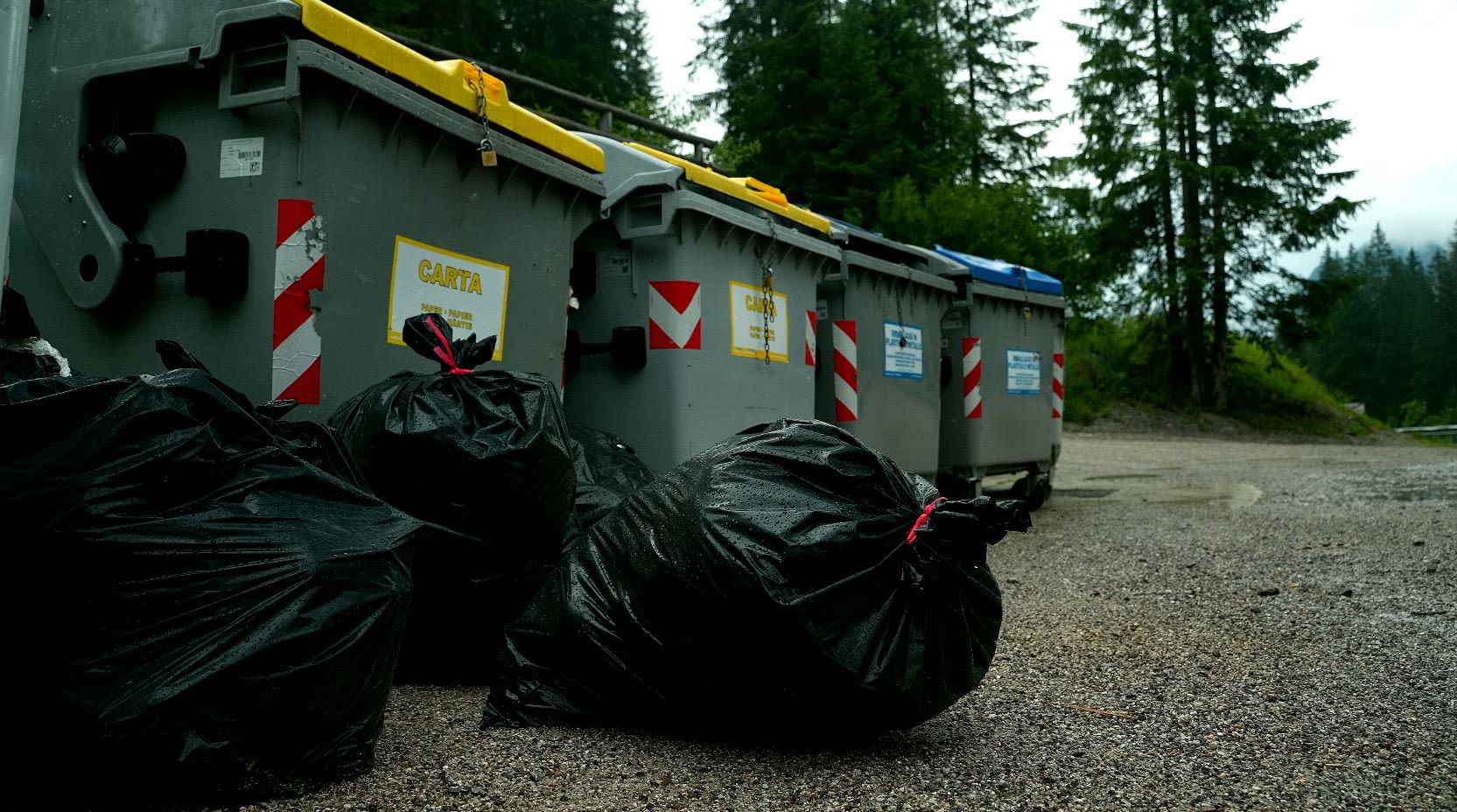
Garbage bins overflow in Adamello Brento National Park. /CGTN Europe
Garbage bins overflow in Adamello Brento National Park. /CGTN Europe
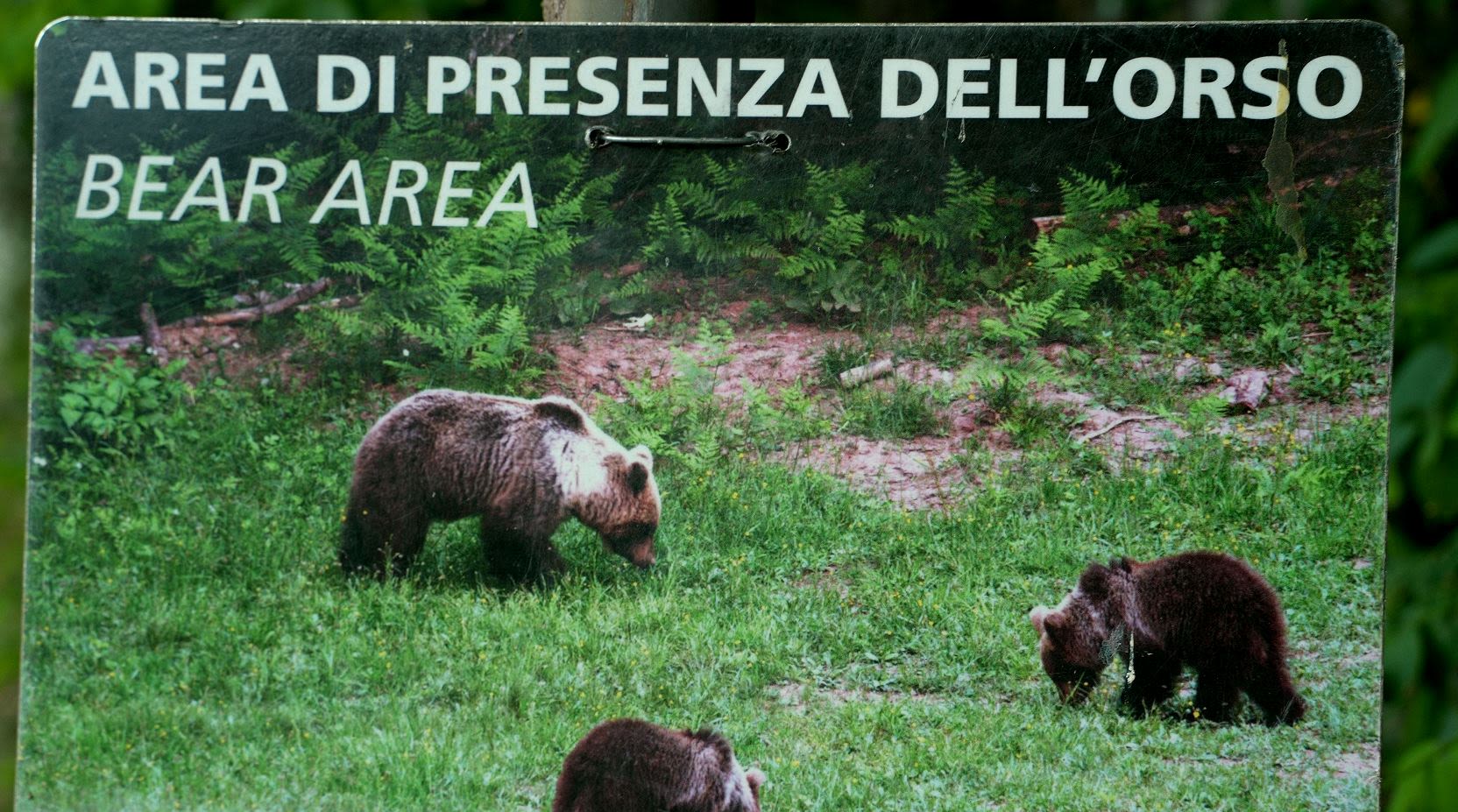
Bear warning signs, Adamello Brento National Park. /CGTN Europe
Bear warning signs, Adamello Brento National Park. /CGTN Europe
Bomberi shakes her head at the divisions the controversy has caused.
"We have from one side people that live in the mountains that don't like large carnivores because they create problems. And we have another large part of the population that is animal rights activists, that really want large carnivores to exist in the Alps. So this creates a huge social conflict – it's crazy the conflict that has caused.
"We decided many years ago that we want the bears, and the population agreed. Now it's too late because according to the law, it's not possible to remove all the bears.
"We are not the only country that has this problem. There are countries that have many more conflicts with bears – and in these countries people adapt their behavior."
She might sound phlegmatic about behavior change, but Bomberi is no theoretical scientist isolated in an ivory tower – she's on the front line.
"I live in a bear and wolf area, and my neighbors say that they are very scared – that they can't go outside anymore. But they're not willing to change their behavior. The worst thing in this moment is being worried without doing anything about it."
She has the comfort of knowing the stats – her research found only 9 percent of bear attacks worldwide were fatal, so even in such harrowing circumstances, you'd survive 10 times in 11 – "but it still happens and it depends a lot on how we behave."
Mustoni hopes that the controversy can become a conversation that changes attitudes.
"I think it's essential to talk to people, to listen to people, to understand that there are some people who want the bear in the area, people who do not want it and to be able to open a great social debate, but important and calm to seek solutions in the collective interest of everyone.
"I hope it will push us to find new forms of coexistence with this great animal that is present in our mountains, that it will push us to deep reflections, that will help us to live with him and therefore to also face nature in a new way."
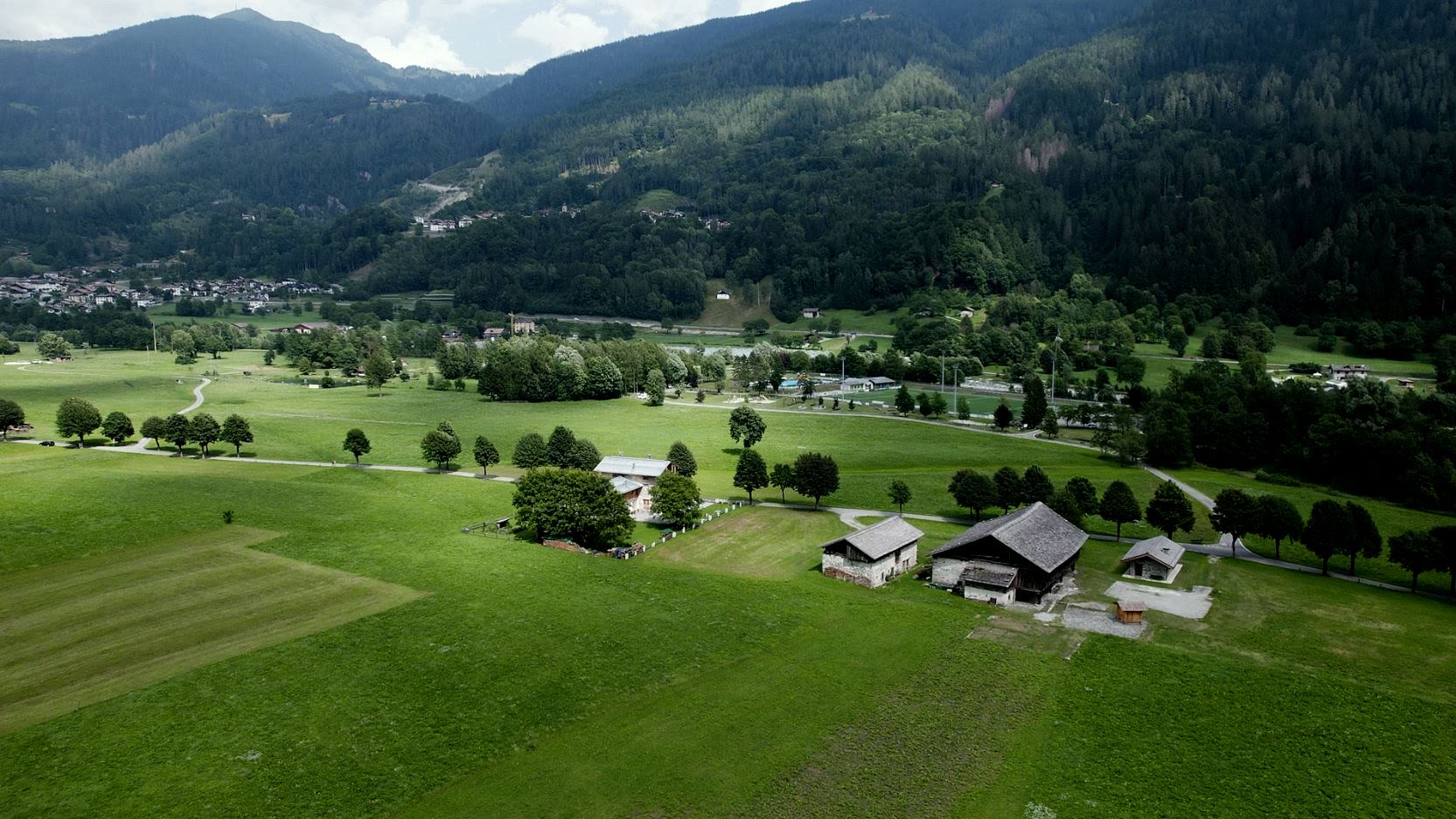
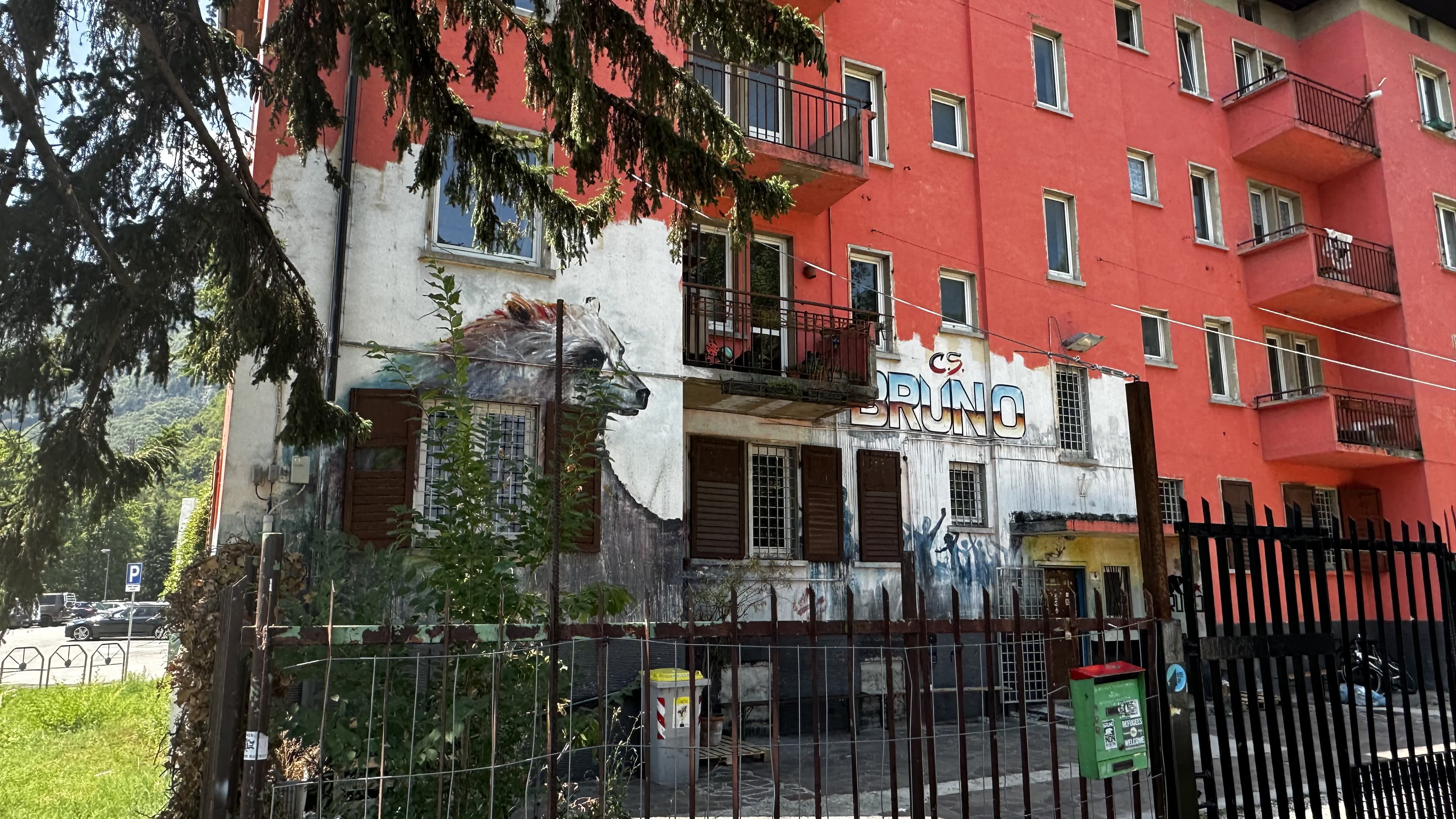
Battle for the Bears
Written and directed by Elizabeth Mearns
Presenter: Johannes Pleschberger
Producer: Gary Parkinson
Camera and drone operator: Andreas Gasser
Videos editer: Thomas Triebel
